Search Result
Results for "
C57BL/6 Sepsis
" in MedChemExpress (MCE) Product Catalog:
1
Biochemical Assay Reagents
1
Isotope-Labeled Compounds
| Cat. No. |
Product Name |
Target |
Research Areas |
Chemical Structure |
-
- HY-117427
-
|
|
Others
|
Metabolic Disease
|
|
D5D-IN-326 is a selective, orally active delta-5 desaturase (D5D) inhibitor, with IC50s of 72 and 22 nM for rat and human D5D in enzymic and cell-based assays, respectively, has no effect on D6D or D9D activity. D5D-IN-326 reduces insulin resistance and decreases body weight in diet-induced obese C57BL/6J mice .
|
-

-
- HY-160025
-
-
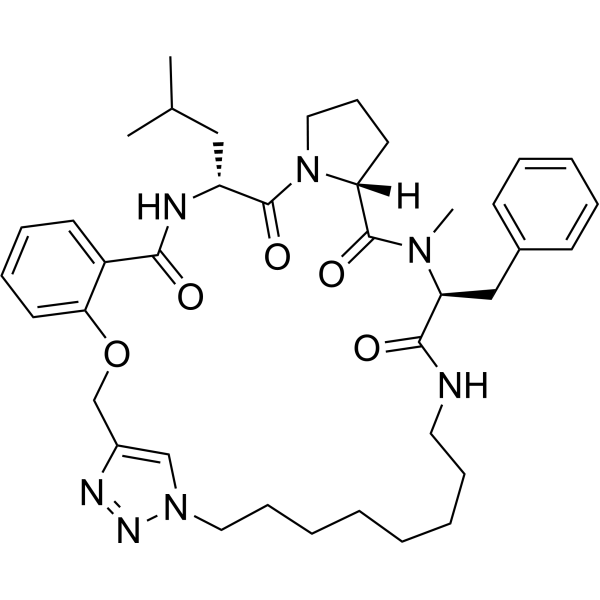
-
- HY-128435
-
|
|
Others
|
Metabolic Disease
|
|
2,4'-Dihydroxybenzophenone ((Z)-SU4312) exhibited estrogenic activities. 2,4'-Dihydroxybenzophenone has oral bioactivity that can effectively protect C57BL/6J mice from Acetaminophen (HY-66005, APAP)-induced hepatotoxicity .
|
-

-
- HY-157429
-
|
|
5-HT Receptor
|
Neurological Disease
|
|
25N-N1-Nap (compound 16) is a β-arrestin-biased 5-HT2A agonist. 25N-N1-Nap antagonizes phencyclidine induced hyperactivity in Male C57BL/6?J mice .
|
-
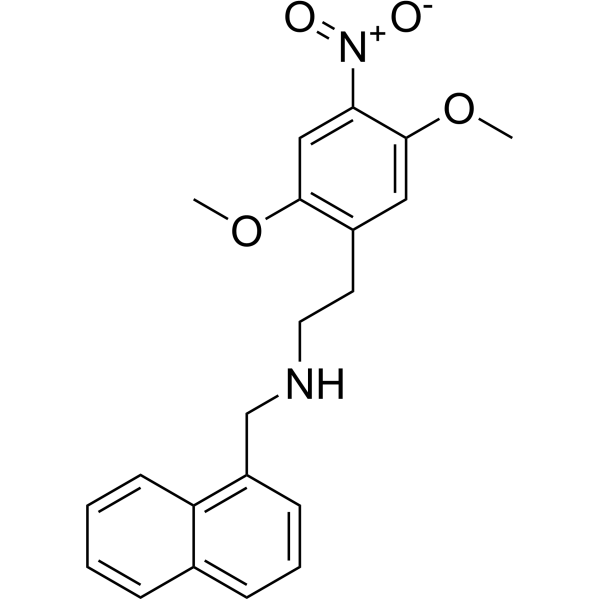
-
- HY-144743
-
|
|
Phosphodiesterase (PDE)
|
Others
|
|
ATX inhibitor 12 (compound 20) is an orally active and potent ATX (autotaxin) inhibitor, with an IC50 of 1.72 nM. ATX inhibitor 12 effectively alleviates lung structural damage with fewer fibrotic lesions at an oral dose of 60 mg/kg in C57Bl/6J mice. ATX inhibitor 12 can be uesd for idiopathic pulmonary fibrosis (IPF) research .
|
-
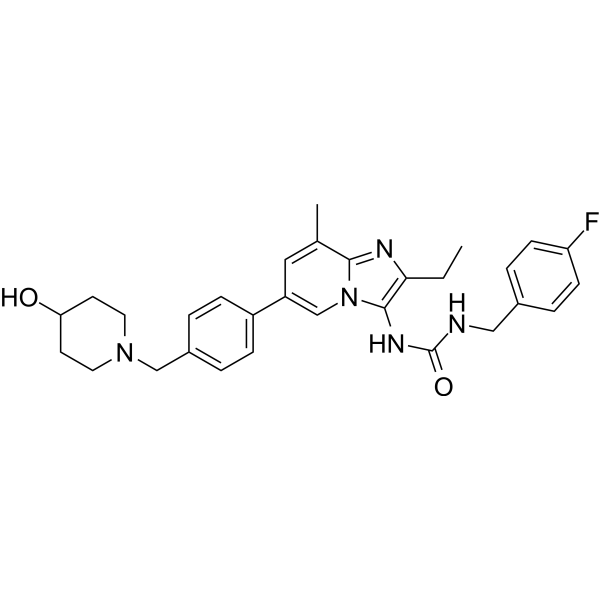
-
- HY-146292
-
|
|
Epigenetic Reader Domain
|
Infection
|
|
BET-IN-8 (Compound 27) is a potent inhibitor of BET with a Ki and Kd of 0.83 and 0.571 μM, respectively. BET-IN-8 ameliorates LPS-induced sepsis in vivo. BET-IN-8 has the potential for the research of sepsis .
|
-
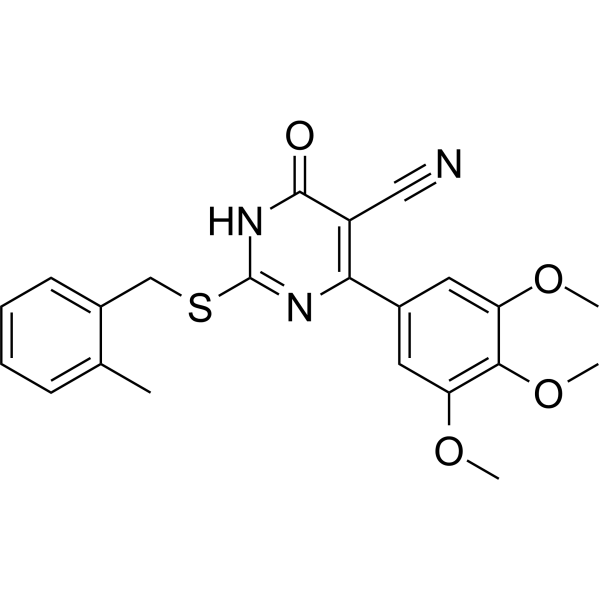
-
- HY-P99753
-
|
BAYX1351
|
TNF Receptor
|
Infection
|
|
Nerelimomab (BAYX1351) is an anti-TNF-α antibody. Nerelimomab can be used for research of sepsis .
|
-

-
- HY-162120
-
|
|
Epoxide Hydrolase
|
Infection
|
|
FZQ-21 (Compound 70P) is a soluble epoxide hydrolase (sEH) inhibitor, with an IC50 of 4 nM. FZQ-21 exhibits equal IC50 (1.5 nM) on inhibiting human sEH as EC5026 (HY-135653) (1.7 nM). FZQ-21 can be used for research of sepsis .
|
-
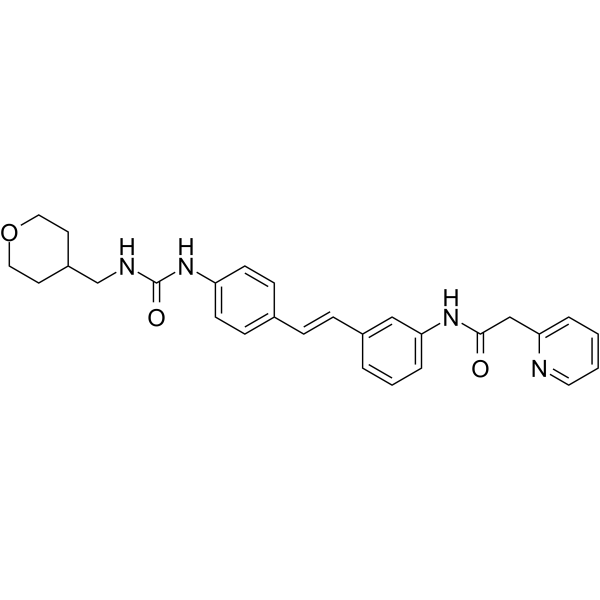
-
- HY-146291
-
|
|
Epigenetic Reader Domain
|
Infection
|
|
BET-IN-7 (Compound 1) is a potent inhibitor of BET with a Ki and Kd of 12.27 and 89.3 μM, respectively. BET-IN-7 has the potential for the research of sepsis .
|
-
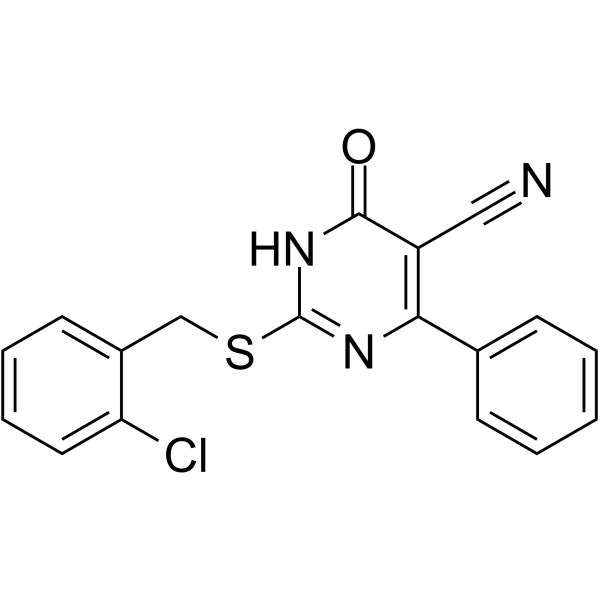
-
- HY-162260
-
|
|
MNK
|
Cancer
|
|
MNK-IN-4 (compound D25) is a potent and selective MNK inhibitor for the treatment of sepsis-related acute splenic injury .
|
-
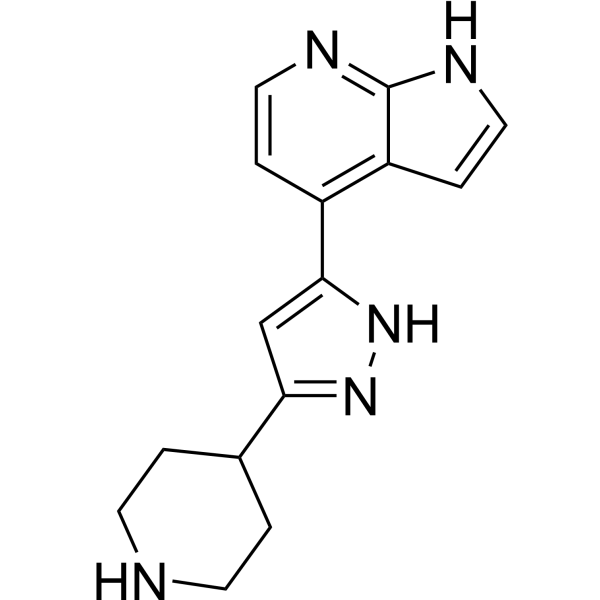
-
- HY-115977
-
|
|
Aldose Reductase
|
Inflammation/Immunology
|
|
Aldose reductase-IN-3 (Compound 5) is a potent and moderately selective inhibitor of aldose reductase (AR) with an IC50 of 3.99 μM. Aldose reductase has recently emerged as a molecular target that is involved in various inflammatory diseases, including sepsis. Aldose reductase-IN-3 has the potential for the research of sepsis .
|
-
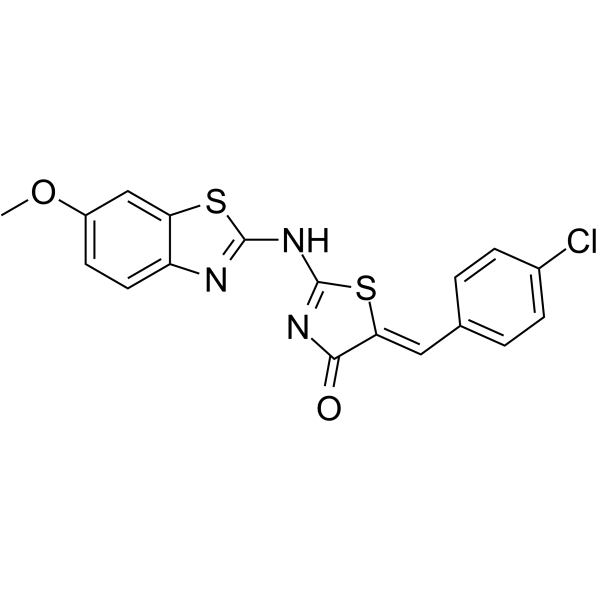
-
- HY-151970
-
|
|
STING
|
Inflammation/Immunology
|
|
STING-IN-4 (Compound 1) is a STING inhibitor that inhibits STING expression and hence reducing activation of STING and nuclear factor-κB (NF-κB) signaling. STING-IN-4 shows anti-inflammatory activity and can be used for the research of sepsis .
|
-
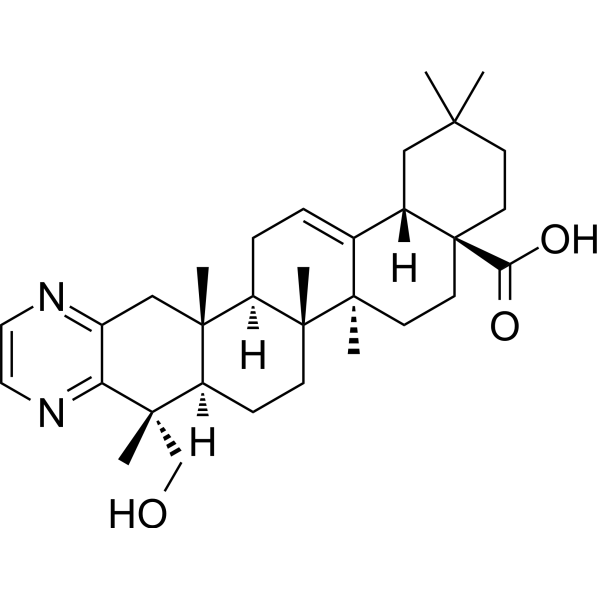
-
- HY-P5949
-
|
|
Bacterial
|
Infection
|
|
AMPR-22 is an antimicrobial peptide. AMPR-22 can bind to the bacterial membrane and induces membrane permeabilization. AMPR-22 is effective against murine model of sepsis induced by MDR strains
|
-

-
- HY-103017
-
|
|
IRAK
|
Infection
|
|
JH-X-119-01 hydrochloride is a potent and selective interleukin-1 receptor-associated kinases 1 (IRAK1) inhibitor. JH-X-119-01 hydrochloride ameliorates LPS-induced sepsis in mice .
|
-
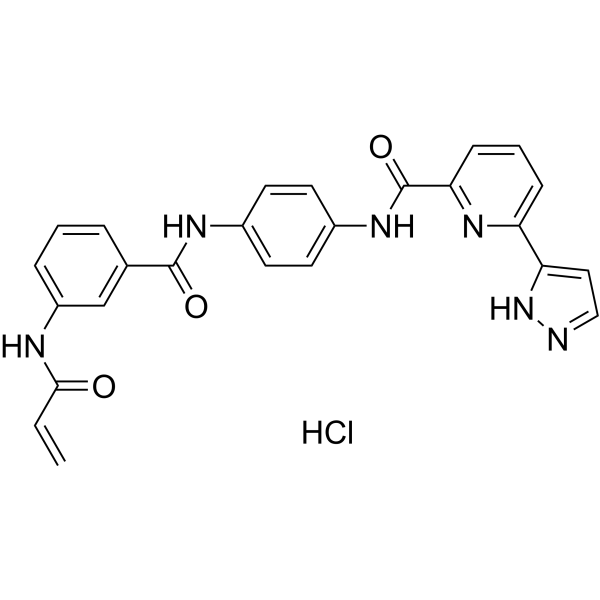
-
- HY-P10208A
-
-
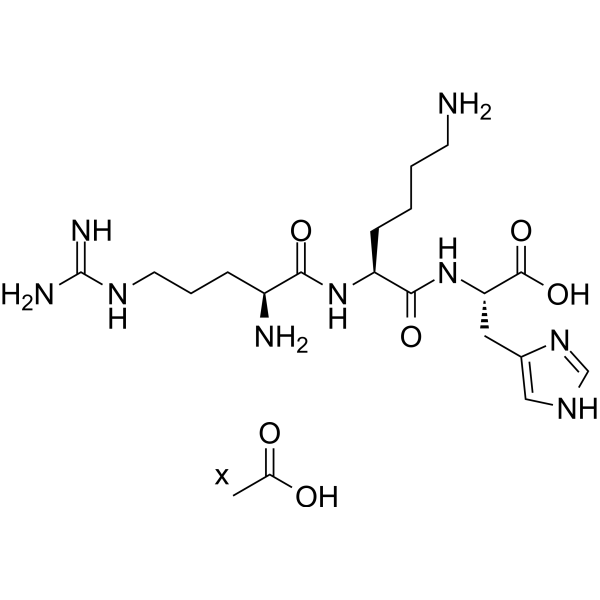
-
- HY-P2280
-
-

-
- HY-P10208
-
|
|
Toll-like Receptor (TLR)
|
Infection
|
|
PKH is a TLR4 antagonist. PKH is a novel tripeptide and can be isolated from Akkermansia muciniphila. RKH reduces sepsis-induced inflammatory cell activation and proinflammatory factor overproduction .
|
-
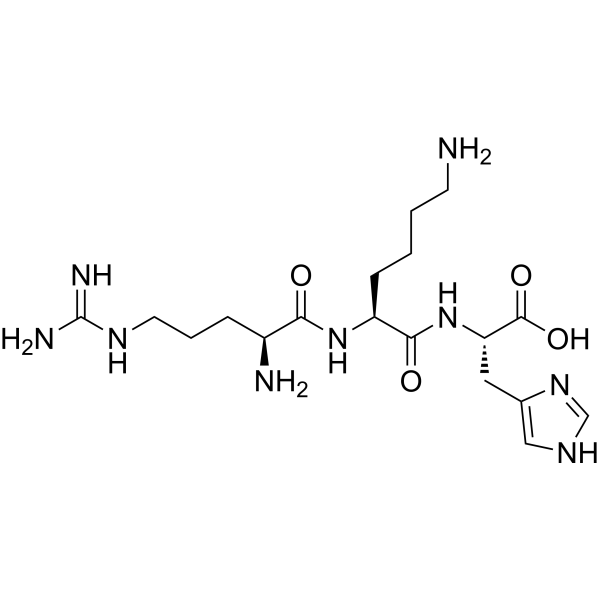
-
- HY-161059
-
|
|
RIP kinase
|
Infection
|
|
ZB-R-55 is an orally active RIPK1 inhibitor. ZB-R-55 can be used for sepsis study .
|
-
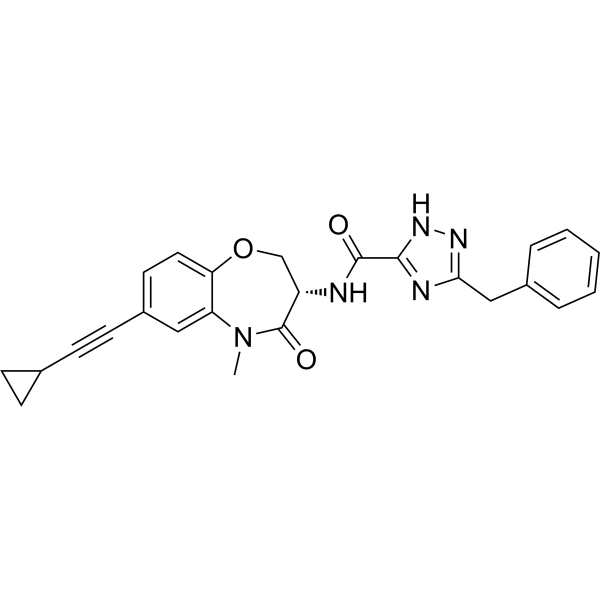
-
- HY-P99425
-
-
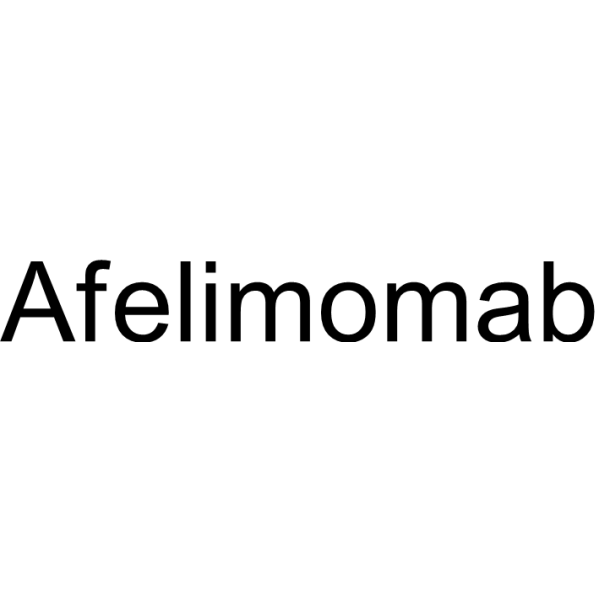
-
- HY-152034
-
|
|
STING
|
Inflammation/Immunology
|
|
STING-IN-5 is a potent STING inhibitor, inhibiting LPS-induced NO synthesis in macrophages with an IC50 value of 1.15 μM. STING-IN-5 inhibits the inflammatory response. STING-IN-5 can be used to research anti-inflammatory diseases and sepsis .
|
-
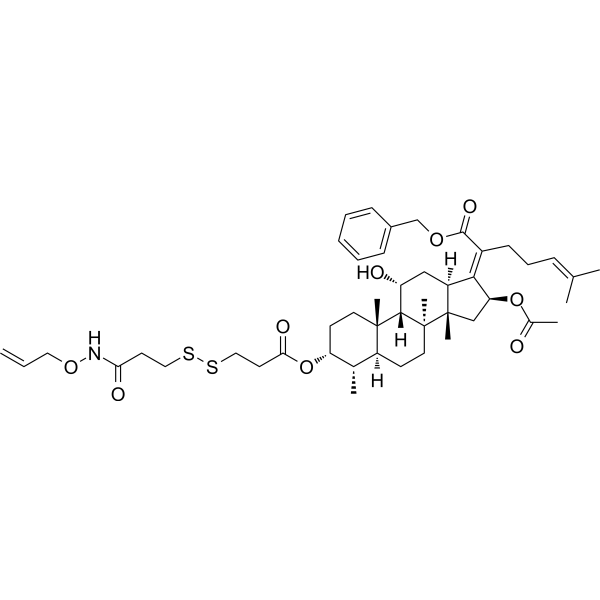
-
- HY-12124
-
|
|
NO Synthase
|
Cardiovascular Disease
|
|
BBS-4 is a potent and selective inducible nitric oxide synthase (NOS2) dimerization inhibitor, with an IC50 of 0.49 nM. BBS-4 can protect mice from the cardiovascular dysfunction of sepsis .
|
-
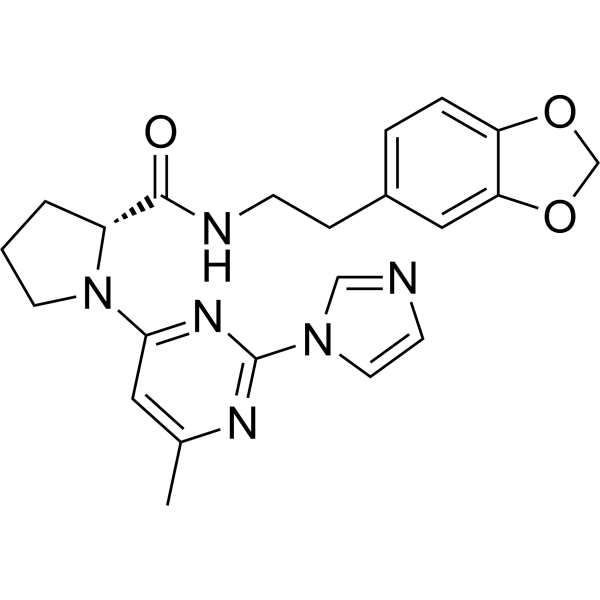
-
- HY-145996
-
|
|
Bacterial
|
Infection
|
|
STC314 is a small polyanion that interact electrostatically with histones. STC314 blocks disruption of lipid-bilayers by histones that inhibits the cytotoxic, platelet-activating and erythrocyte-damaging effects of histones. STC314 has anti-infective effects and can be uesd for sepsis research .
|
-
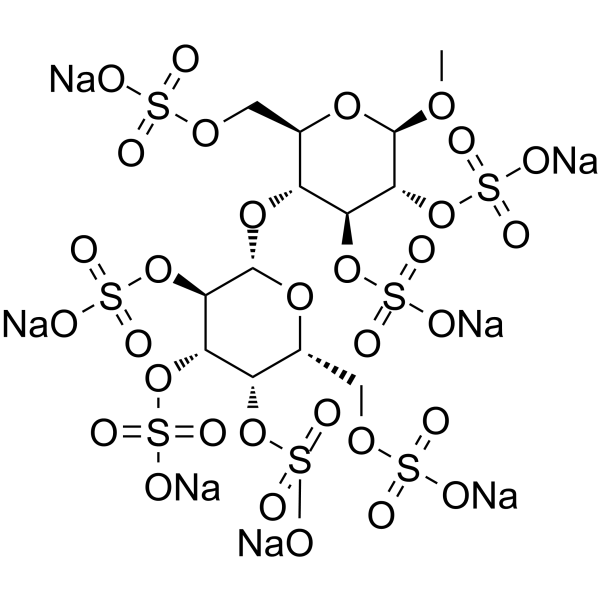
-
- HY-103639
-
|
|
Toll-like Receptor (TLR)
|
Inflammation/Immunology
|
|
M62812 (free base) is a toll-like receptor 4 (TLR4) signal transduction inhibitor. M62812 can suppress endothelial cell and leukocyte activation and prevents lethal septic shock in mice. M62812 can be used for the research of sepsis .
|
-

-
- HY-P3031
-
|
MAPK1
|
p38 MAPK
NF-κB
|
Inflammation/Immunology
|
|
Mitogen-activated protein kinase 1 (MAPK1) can activate the downstream p38/NF-κB pathway. Mitogen-activated protein kinase 1 can regulate cellular processes in various sepsis-associated diseases. MAPK-catalyzed phosphorylation of substrate proteins functions as a switch to turn on or off the activity of the substrate protein .
|
-
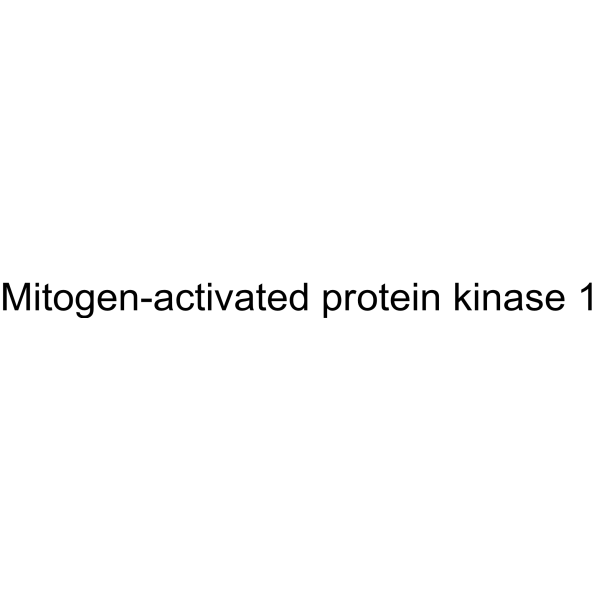
-
- HY-103639A
-
|
|
Toll-like Receptor (TLR)
|
Infection
|
|
M62812 is a toll-like receptor 4 (TLR4) signaling inhibitor. M62812 inhibits endothelial and leukocyte activation and prevents lethal septic shock in mice. M62812 can reduces LPS-induced coagulation and inflammatory responses. M62812 can be used for the research of sepsis .
|
-
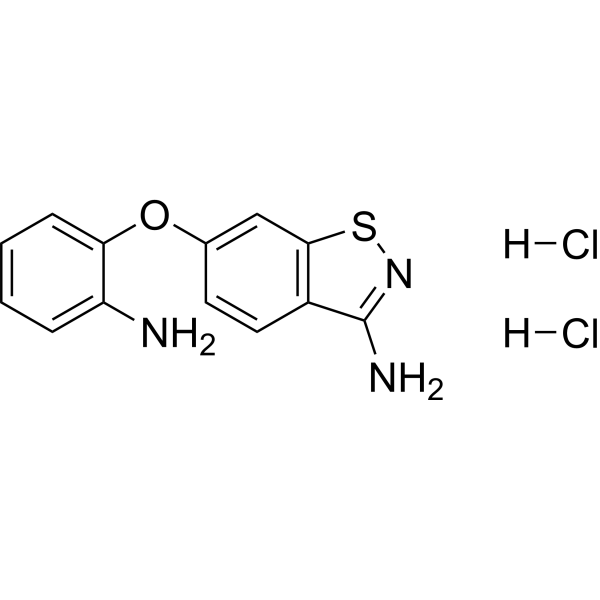
-
- HY-156367
-
|
|
RIP kinase
|
Inflammation/Immunology
|
|
RIPK1-IN-16 is an orally active and potent inhibitor of RIPK1. RIPK1-IN-16 inhibits excessive inflammation by blocking RIPK1-mediated necroptosis in vivo. RIPK1-IN-16 protects mouse from TNF-induced systemic inflammatory response syndrome and sepsis .
|
-
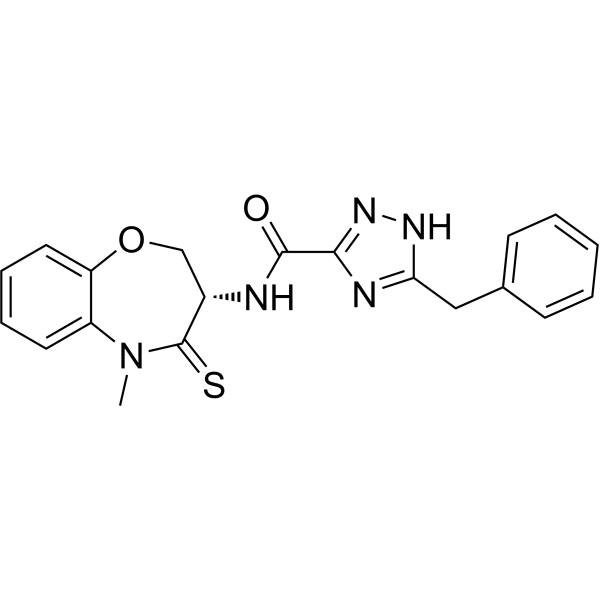
-
- HY-P99520
-
|
CaCP-29, IFX-1
|
Complement System
SARS-CoV
|
Infection
Inflammation/Immunology
|
|
Vilobelimab (CaCP-29, IFX-1) is a monoclonal anti-C5a antibody to the allergen C5a, a pro-inflammatory complement division product that plays a central role in mediating organ dysfunction. Vilobelimab acts as a C5a inhibitor, inhibiting neutrophil activation, chemotaxis, and reducing inflammatory signalling, and may be used in studies related to sepsis, COVID-19, etc .
|
-

-
- HY-161520
-
|
|
Glucocorticoid Receptor
NF-κB
|
Inflammation/Immunology
|
|
Glucocorticoid receptor/NF-κB modulator-1 (Compound 20) is a derivative of ocotillol. Glucocorticoid receptor/NF-κB modulator-1 suppresses the degradation of glucocorticoid receptor (GR) mRNA and GR protein, inhibits the activation of NF-κB signaling pathway. Glucocorticoid receptor/NF-κB modulator-1 downregulates levels of NO, interleukin-6 and tumor necrosis factor-alpha (TNF-α). Glucocorticoid receptor/NF-κB modulator-1 ameliorates sepsis in mouse model .
|
-

-
- HY-161471
-
|
|
Ser/Thr Protease
|
Inflammation/Immunology
|
|
DCLK1-IN-5 (Compound a24) is a DCLK1 inhibitor (IC50: 179.7 nM). DCLK1-IN-5 inhibits lipopolysaccharide (HY-D1056)-induced inflammation via inhibiting DCLK1-mediated IKKβ phosphorylation. DCLK1-IN-5 protects mice against inflammation-induced lung injury and sepsis .
|
-

-
- HY-102065
-
|
|
Prostaglandin Receptor
|
Others
|
|
SC-19220 is a competitive prostaglandinn E2 receptor antagonist. SC-19220 increases the bladder capacity and reduced the voiding efficiency of micturition (elicited by slow transvesical filling) of urethane-anesthetized rats. SC-19220 can restores the balance in bone marrow granulocyte and monocyte production after burn sepsis .
|
-
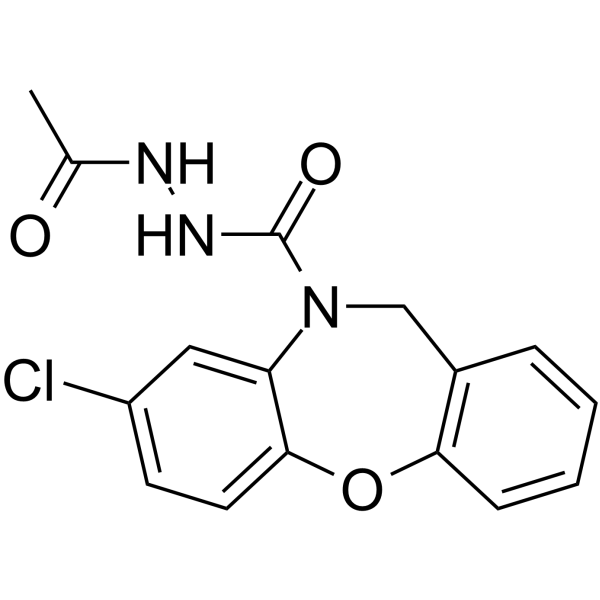
-
- HY-P2682
-
|
|
MMP
|
Metabolic Disease
|
|
MMP-8/MMP-26 Fluorogenic substrate (DNP-Pro-Leu-Ala-Tyr-Trp-Ala-Arg) is a matrix metalloproteinase-8 (MMP-8) fluorogenic substrate. MMP-8/MMP-26 Fluorogenic substrate can be used for the research of atherosclerosis, pulmonary fibrosis, and sepsis .
|
-
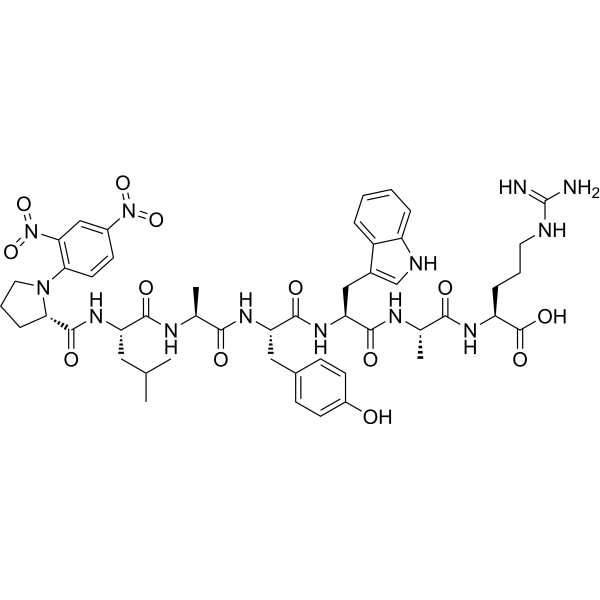
-
- HY-149485
-
|
|
JNK
|
Inflammation/Immunology
|
|
JNK2-IN-1 (Compound J27) is a JNK2 inhibitor (Kds: 79.2 μM). JNK2-IN-1 has anti-inflammatory activity. JNK2-IN-1 decreases the release of TNF-α and IL-6 through inhibiting the activation of NF-κB/MAPK pathway. JNK2-IN-1 alleviates the symptoms of LPS-induced acute lung injury (ALI) and sepsis .
|
-
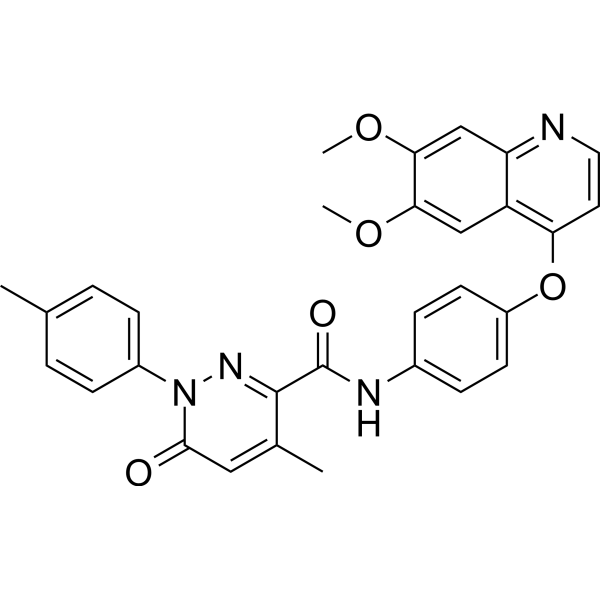
-
- HY-P2458
-
|
|
Bacterial
|
Infection
|
|
CAP18 (rabbit) is a 37 amino acids antimicrobial peptide originally isolated from rabbit granulocytes. CAP18 (rabbit) has broad antimicrobial activity against both Gram-positive (IC50, 130-200 nM) and Gram-negative (IC50, 20-100 nM) bacteria. CAP18 (rabbit) has the potential for bacterial sepsis research .
|
-

-
- HY-P3612
-
|
|
CXCR
|
Inflammation/Immunology
|
|
CTCE-0214 is a chemokine CXC receptor 4 (CXCR4) agonist, SDF-1α (stromal cell-derived factor-1α) peptide analog. CTCE-0214 shows anti-inflammatory activity, and can be used in inflammation sepsis and systemic inflammatory syndromes research .
|
-

-
- HY-163478
-
|
|
NF-κB
|
Inflammation/Immunology
|
|
TNIK-IN-9 (Compound 54) is a selective and potent NIK inhibitor, with an IC50 of 1.27 nM. TNIK-IN-9 can inhibit pro-inflammatory cytokines and nitric oxide production. TNIK-IN-9 exhibits significant anti-inflammatory effects, improved mortality, and hepatoprotective effects in sepsis models .
|
-
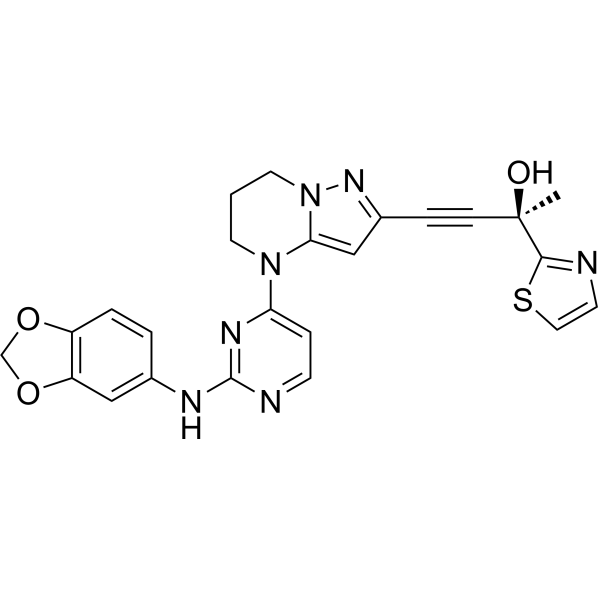
-
- HY-100574A
-
|
|
Protein Arginine Deiminase
Apoptosis
MicroRNA
|
Inflammation/Immunology
Cancer
|
|
Cl-amidine hydrochloride is an orally active peptidylarginine deminase (PAD) inhibitor, with IC50 values of 0.8 μM, 6.2 μM and 5.9 μM for PAD1, PAD3, and PAD4, respectively. Cl-amidine hydrochloride induces apoptosis in cancer cells. Cl-amidine hydrochloride induces microRNA (miR)-16 (miRNA-16, microRNA-16) expression and causes cell cycle arrest. Cl-Amidine hydrochloride prevents histone 3 citrullination and neutrophil extracellular trap formation, and improves survival in a murine sepsis model .
|
-
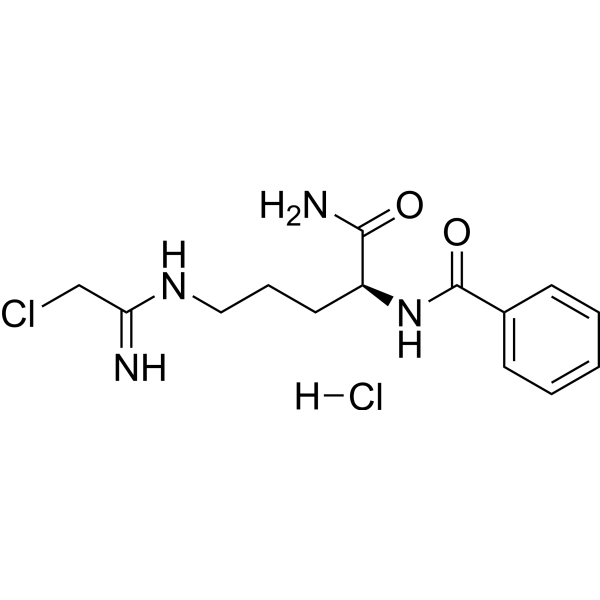
-
- HY-100574
-
|
|
Protein Arginine Deiminase
Apoptosis
MicroRNA
|
Inflammation/Immunology
Cancer
|
|
Cl-amidine is an orally active peptidylarginine deminase (PAD) inhibitor, with IC50 values of 0.8 μM, 6.2 μM and 5.9 μM for PAD1, PAD3, and PAD4, respectively. Cl-amidine induces apoptosis in cancer cells. Cl-amidine induces microRNA (miR)-16 (miRNA-16, microRNA-16) expression and causes cell cycle arrest. Cl-Amidine prevents histone 3 citrullination and neutrophil extracellular trap formation, and improves survival in a murine sepsis model .
|
-
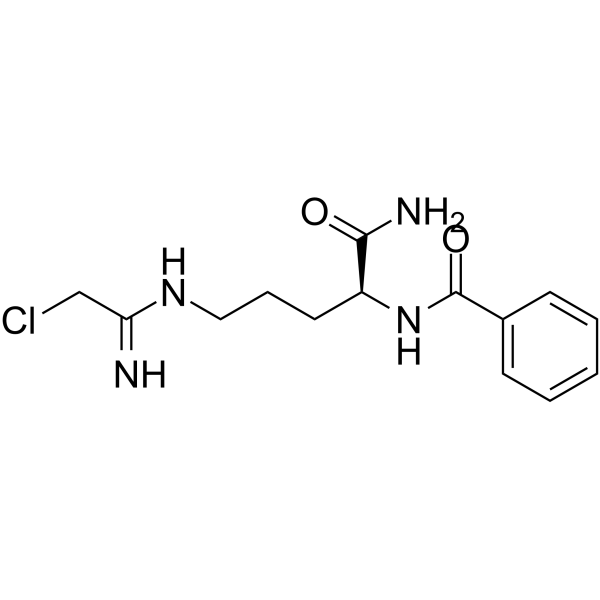
-
- HY-N6018
-
|
|
Caspase
TNF Receptor
SOD
Reactive Oxygen Species
|
Inflammation/Immunology
Cancer
|
|
Beta-Eudesmol has anticancer and anti-inflammatory activities. Beta-Eudesmol can induce apoptosis. Beta-Eudesmol is a neostigmine antagonist. Beta-Eudesmol can antagonize neostigmine-induced neuromuscular failure. Beta-Eudesmol can be used in the study of sepsis diseases. Beta-Eudesmol is a sesquiterpene-like compound that can be extracted from the rhizome of Atractylodes lancea .
|
-
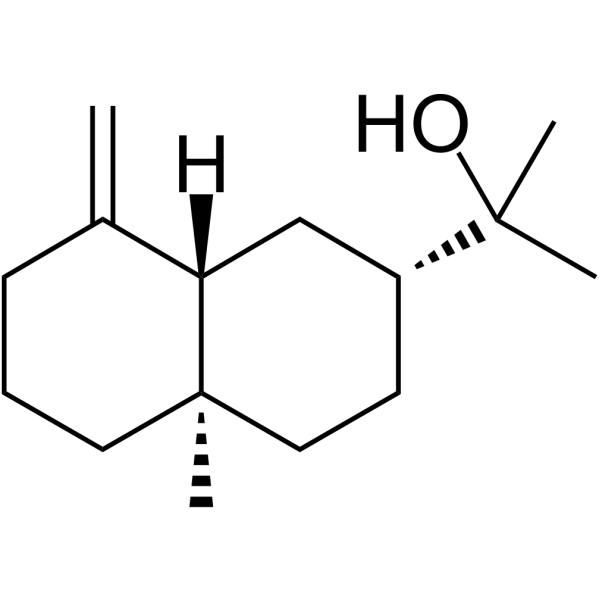
-
- HY-161072
-
|
|
NOD-like Receptor (NLR)
|
Inflammation/Immunology
|
|
CSC-6 is a NLRP3 inhibitor. CSC-6 can significantly inhibit IL-1β secreted by PMATHP-1 cells with an IC50 value of 2.3 μM. CSC-6 specifically binds NLRP3 and inhibits NLRP3 activation by blocking ASC oligomerization during NLRP3 assembly. CSC-6 effectively reduces the symptoms of NLRP3 overactivation-mediated sepsis and gout in mouse models .
|
-

-
- HY-100574B
-
|
|
Protein Arginine Deiminase
Apoptosis
MicroRNA
|
Inflammation/Immunology
Cancer
|
|
Cl-amidine TFA is an orally active peptidylarginine deminase (PAD) inhibitor, with IC50 values of 0.8 μM, 6.2 μM and 5.9 μM for PAD1, PAD3, and PAD4, respectively. Cl-amidine TFA induces apoptosis in cancer cells. Cl-amidine TFA induces microRNA (miR)-16 (miRNA-16, microRNA-16) expression and causes cell cycle arrest. Cl-Amidine TFA prevents histone 3 citrullination and neutrophil extracellular trap formation, and improves survival in a murine sepsis model .
|
-

-
- HY-145307
-
|
|
Bacterial
|
Infection
Inflammation/Immunology
|
|
DATPT is a 12WLVSKF17 peptide-mimetic molecule. DATPT blocks the SNX9-p47phox interaction in the endosome and suppresses reactive oxygen species and inflammatory cytokine production. DATPT with anti-inflammatory and antibacterial functions has the potential for the research of sepsis .
|
-
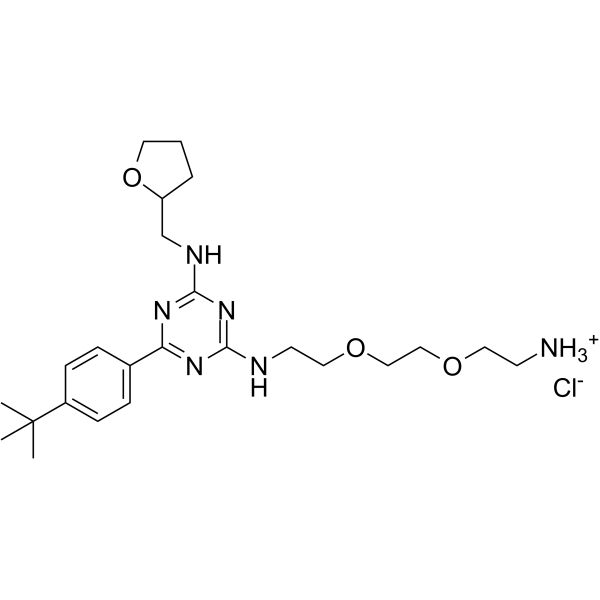
-
- HY-126154
-
|
|
Toll-like Receptor (TLR)
|
Inflammation/Immunology
|
|
L48H37 is an analog of Curcumin (HY-N0005) with improved chemical stability. L48H37 is a potent and specific myeloid differentiation protein 2 (MD2) inhibitor and inhibits the interaction and signaling transduction of LPS-TLR4/MD2. L48H37 is used for the research of sepsis or lung injury treatment .
|
-
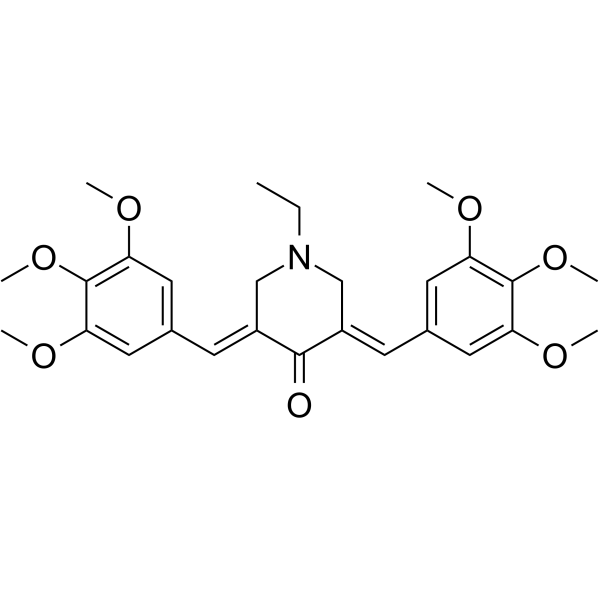
-
- HY-146066
-
|
|
nAChR
JAK
STAT
NO Synthase
|
Inflammation/Immunology
|
|
α7 nAchR-JAK2-STAT3 agonist 1 is a potent α7 nAchR-JAK2-STAT3 agonist, with an IC50 value of 0.32 μM for nitric oxide (NO). α7 nAchR-JAK2-STAT3 agonist 1 effectively suppresses the expression of iNOS, IL-1β, and IL-6 in murine RAW264.7 macrophages. α7 nAchR-JAK2-STAT3 agonist 1 can inhibit LPS-induced NO release, NF-κB activation and cytokine production. α7 nAchR-JAK2-STAT3 can be used for researching sepsis .
|
-
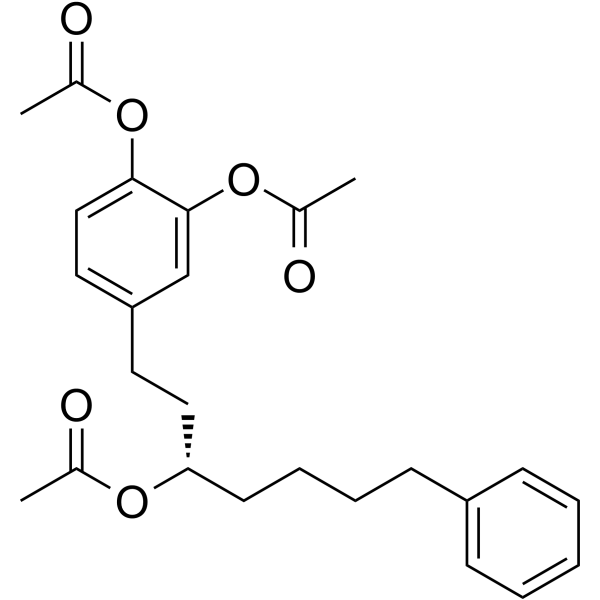
-
- HY-P10368
-
-

-
- HY-156519
-
|
|
NF-κB
|
Inflammation/Immunology
|
|
ALPK1-IN-3 is an inhibitor of ALPK1 extracted from patent WO2022063153A1 compound T007. ALPK1-IN-3 inhibits kidney proinflammatory gene expression and improves the survival rate of the animals in sepsis induced acute kidney injury animal model . ALPK1-IN-3 is a click chemistry reagent, it contains an Alkyne group and can undergo copper-catalyzed azide-alkyne cycloaddition (CuAAc) with molecules containing Azide groups.
|
-

-
- HY-143456
-
|
|
Others
|
Inflammation/Immunology
|
|
Anti-inflammatory agent 18 (compound 3b) shows NO inhibitory activity, with an IC50 of 15.94 μM. Anti-inflammatory agent 18 inhibits HMGB1-induced later inflammation. Anti-inflammatory agent 18 can be used for the research of later inflammation diseases such as coronavirus diseases (COVID-19) and sepsis, etc .
|
-
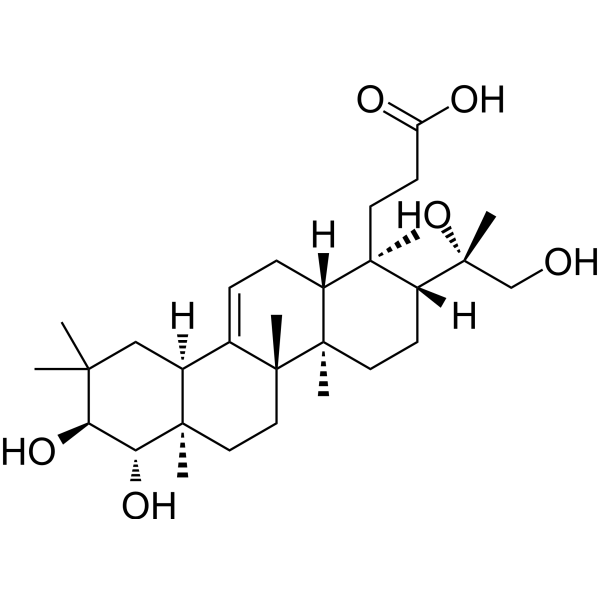
-
- HY-143457
-
|
|
Others
|
Inflammation/Immunology
|
|
Anti-inflammatory agent 19 (compound 2b) shows NO inhibitory activity, with an IC50 of 36.00 μM. Anti-inflammatory agent 19 inhibits HMGB1-induced later inflammation. Anti-inflammatory agent 19 can be used for the research of later inflammation diseases such as coronavirus diseases (COVID-19) and sepsis, etc .
|
-
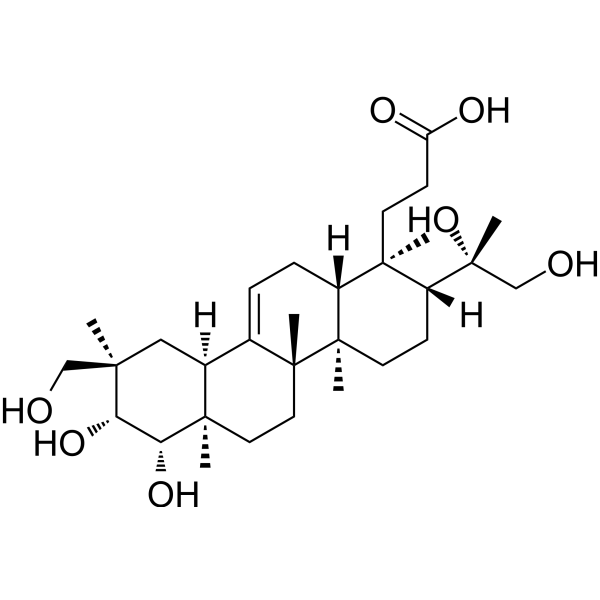
-
- HY-B1924
-
|
Desmethyl-vancomycin hydrochloride
|
Bacterial
Antibiotic
|
Infection
|
|
Norvancomycin hydrochloride is suitable for endocarditis, osteomyelitis, pneumonia, sepsis or soft tissue infections caused by Staphylococcus aureus (including methicillin-resistant strains and multi-drug-resistant strains).
|
-

-
- HY-P99309
-
|
BSYX-A 110; Anti-S. Epidermidis LTA Recombinant Antibody
|
Bacterial
|
Infection
|
|
Pagibaximab is a chimeric IgG1 antibody recognizing the surface component lipoteichoic acid of S. aureus and S. epidermidis. Pagibaximab can be used to prevent staphylococcal sepsis .
|
-

-
- HY-144220
-
-
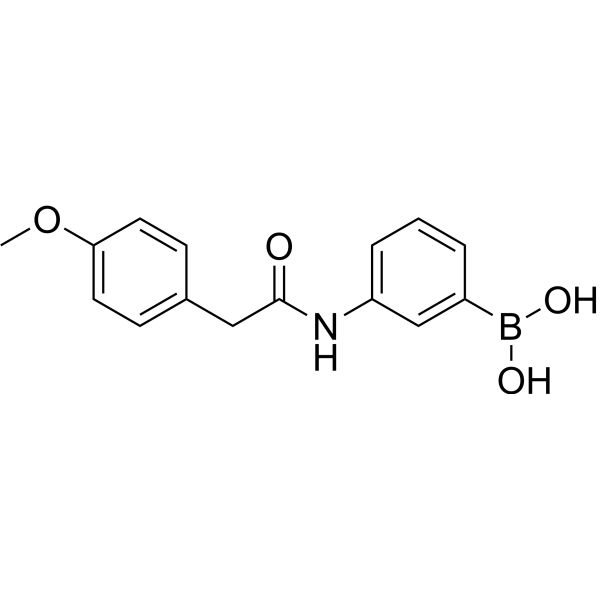
- HY-B0977
-
|
Dicloxacillin sodium salt monohydrate
|
Bacterial
Antibiotic
|
Infection
Inflammation/Immunology
|
|
Dicloxacillin Sodium hydrate (Dicloxacillin sodium salt monohydrate) is a narrow-spectrum β-Lactam antibiotic of the penicillin class, is used to treat infections caused by susceptible Gram-positive bacteria, active against beta-lactamase-producing organisms such as Staphylococcus aureus .
|
-
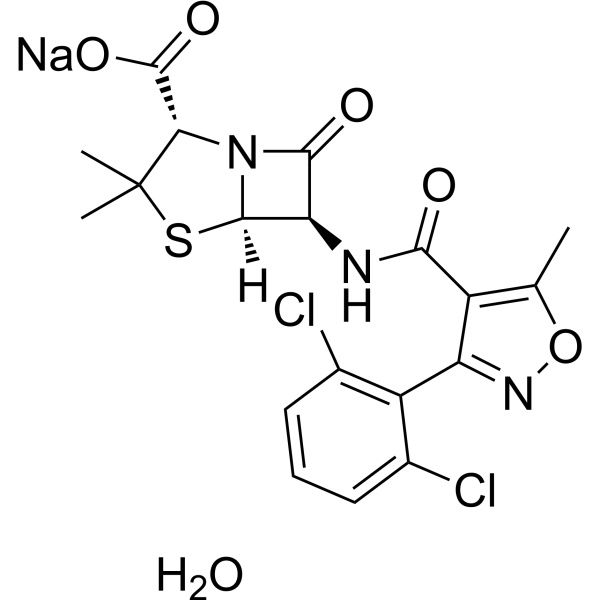
- HY-141616
-
-
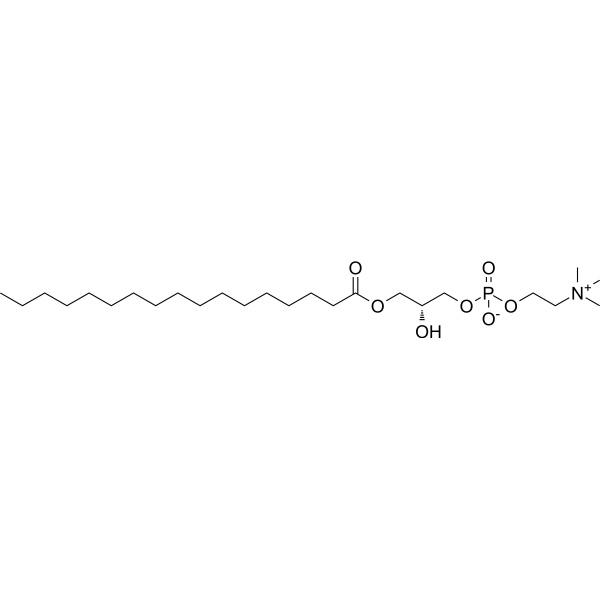
- HY-N2351
-
|
|
Others
|
Infection
Metabolic Disease
Inflammation/Immunology
|
|
Paeonoside is a bioactive compound identified in P. suffruticosa that promotes wound healing and migration in osteoblast differentiation. Paeonoside has also been reported to have some antidiabetic activity and may prevent sepsis-induced lethality .
|
-
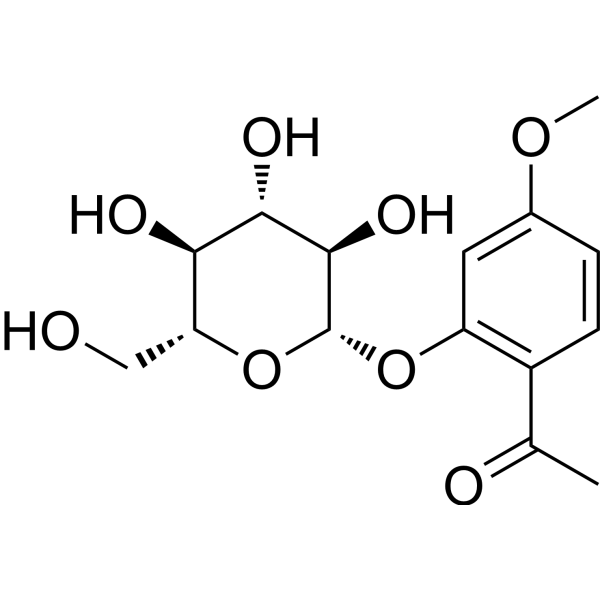
- HY-136066
-
|
TωMCA sodium
|
Others
|
Metabolic Disease
|
|
Tauro-ω-muricholic acid sodium (TωMCA sodium) is a bile acid released by the liver and an analog of tauro-α-muricholic acid. Tauro-ω-muricholic acid sodium is investigated as a potential marker in plasma for early-onset neonatal sepsis (EOS) and cholestasis studies
|
-

- HY-139414
-
|
|
Interleukin Related
p38 MAPK
ERK
Apoptosis
|
Inflammation/Immunology
|
|
Lysophosphatidylcholines is an orally active lysolipid and a component of oxidized low density lipoprotein (LDL). Lysophosphatidylcholines induces cell injury, the production of IL-1β and apoptosis. Lysophosphatidylcholines has a proactive effect on sepsis .
|
-

- HY-155250
-
|
|
Bacterial
|
Infection
|
|
Antibacterial agent 154 (compound 7) is a derivative of Fluoroqinolones and is an orally effective antibacterial agent. Antibacterial agent 154 inhibits Gram-positive and Gram-negative bacteria. Antibacterial agent 154 demonstrated in vivo efficacy in a mouse model of staphylococcal sepsis .
|
-
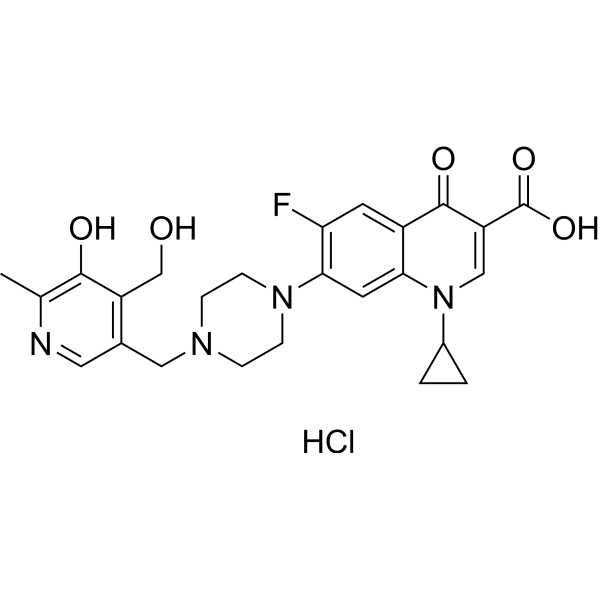
- HY-163409
-
|
|
β-catenin
|
Inflammation/Immunology
Cancer
|
|
CKG012 is an inhibitor for Wnt/βcatenin signaling pathway. CGK012 inhibits release of HMGB1 and transcription of β-catenin, exhibits attenuating activities against cecal ligation and puncture (CLP)-induced sepsis and multiple myeloma cancer .
|
-

- HY-126042
-
|
(±)-Lisophylline
|
Others
|
Metabolic Disease
Inflammation/Immunology
|
|
(±)-Lisofylline ((±)-Lisophylline) is the racemate of Lisofylline. Lisofylline inhibits the generation of phosphatidic acid and free fatty acids. Lisofylline also blocks the release of pro-inflammatory cytokines in oxidative tissue injury, in response to cancer chemotherapy and in experimental sepsis. Lisofylline can be used for Type 1 diabetes research .
|
-
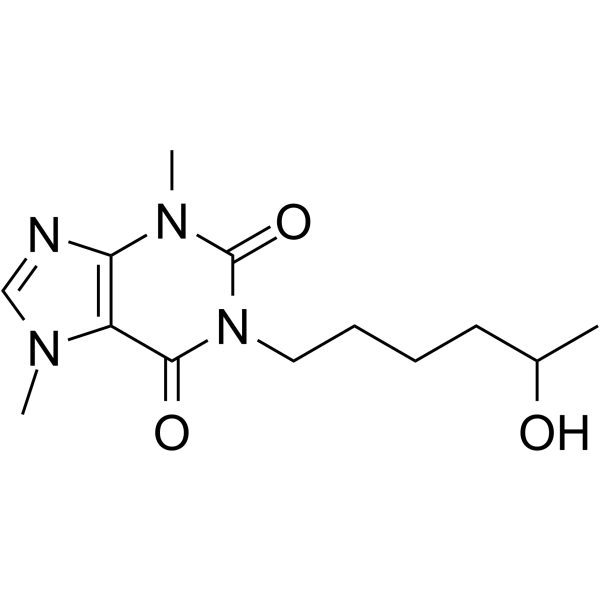
- HY-107329
-
|
|
Bacterial
Antibiotic
|
Infection
|
|
Cefathiamidine is a first-generation cephalosporin antibacterial agent and is used to treat infections caused by susceptible bacteria. Cefathiamidine exhibits a wide spectrum of antimicrobial activity against bacteria. Cefathiamidine is used for the treatment of respiratory, liver, five senses, urinary tract infections, endocarditis and sepsis .
|
-
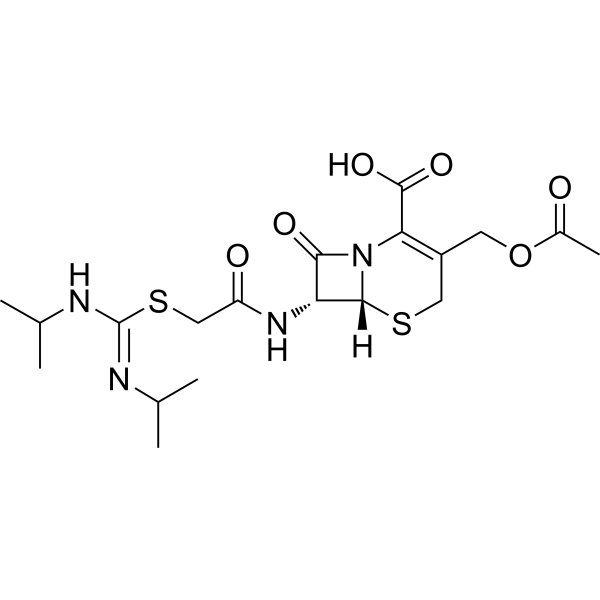
- HY-B0282
-
|
ACh chloride
|
nAChR
Calcium Channel
Endogenous Metabolite
|
Neurological Disease
Cancer
|
|
Acetylcholine chloride (ACh chloride), a neurotransmitter, is a potent cholinergic agonist. Acetylcholine chloride is a modulator of the activity of dopaminergic (DAergic) neurons through the stimulation of nicotinic acetylcholine receptors (nAChRs) . Acetylcholine chloride inhibits p53 mutant peptide aggregation in vitro .
|
-
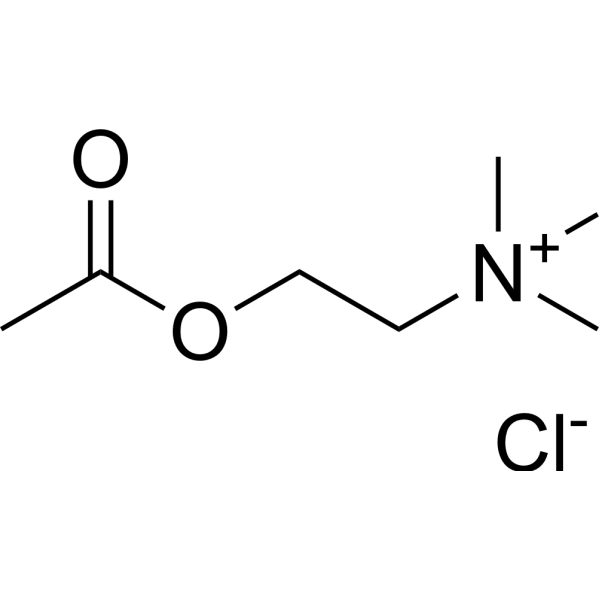
- HY-105239
-
|
FE 202158
|
Vasopressin Receptor
|
Cardiovascular Disease
|
|
Selepressin (FE 202158) is a selective vasopressin V1A receptor agonist. Selepressin is a potent vasopressor. Selepressin can be used in the research of septic shock .
|
-

- HY-105239A
-
|
FE 202158 acetate
|
Vasopressin Receptor
|
Cardiovascular Disease
|
|
Selepressin (FE 202158) acetate is a selective vasopressin V1A receptor agonist. Selepressin acetate is a potent vasopressin. Selepressin acetate can be used in the study of septic shock.
|
-
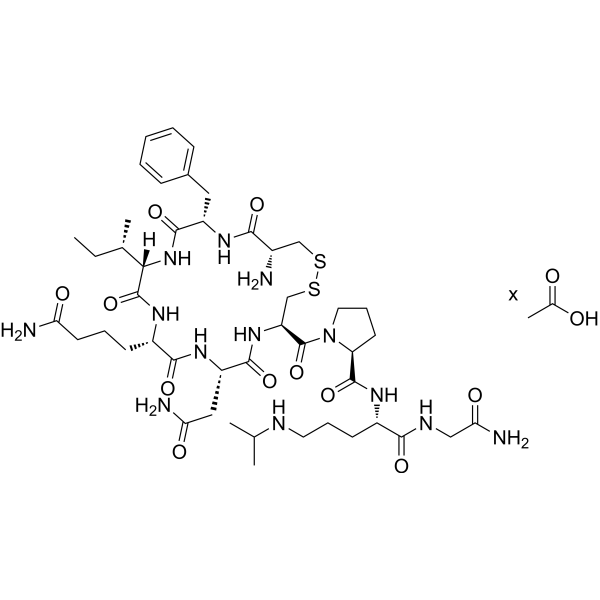
- HY-N12344
-
|
|
JNK
|
Inflammation/Immunology
|
|
n-Butyl α-D-fructofuranoside, isolated from the root barks of Ulmus davidiana var. japonica, enhances Nrf2 activity through activation of JNK and has antiinflammation activity .
|
-

- HY-A0248
-
|
|
Bacterial
Antibiotic
|
Infection
|
|
Polymyxin B Sulfate is a potent antibacterial agent and a relatively toxic antibiotic. Polymyxin B Sulfate also is a antiendotoxin agent. Polymyxin B Sulfate shows endotoxin-neutralizing properties can be used as adjunctive research in gram-negative sepsis. Polymyxin B Sulfate shows antibacterial activities in vitro and in vivo .
|
-
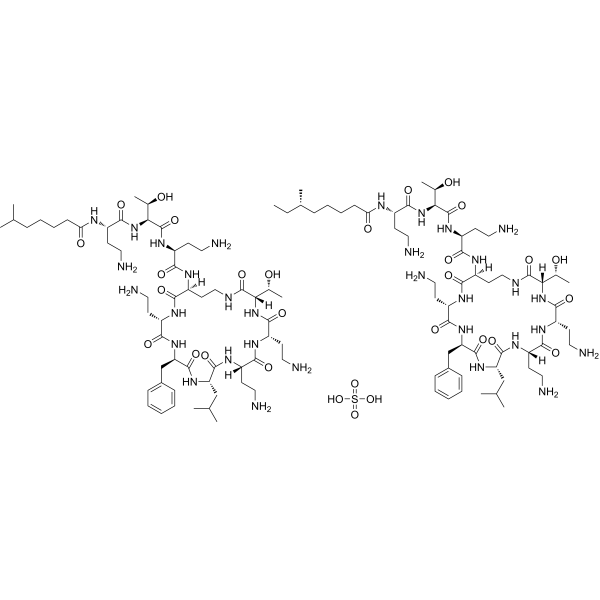
- HY-121636
-
|
RvD2
|
TRP Channel
|
Infection
Neurological Disease
Inflammation/Immunology
|
|
Resolvin D2 is a metabolite of docosahexaenoic acid (DHA), with anti-inflammatory, anti-infective activities. Resolvin D2 is a potent regulator of leukocytes and controls microbial sepsis. Resolvin D2 is a remarkably potent inhibitor of TRPV1 (IC50 = 0.1 nM) and TRPA1 (IC50 = 2 nM) in primary sensory neurons .
|
-

- HY-151537
-
|
|
Fluorescent Dye
|
Infection
Inflammation/Immunology
|
|
Gol-NTR is a Golgi-targetable probe with high selectivity and sensitivity. Gol-NTR is Nitroreductase (NTR)-activated and has visualization acute lung injury (ALI) and repair function. Gol-NTR has a low detection limit of 54.8 ng/mL. Gol-NTR can be used for the research for monitoring and assessing research response of sepsis-induced ALI .
|
-
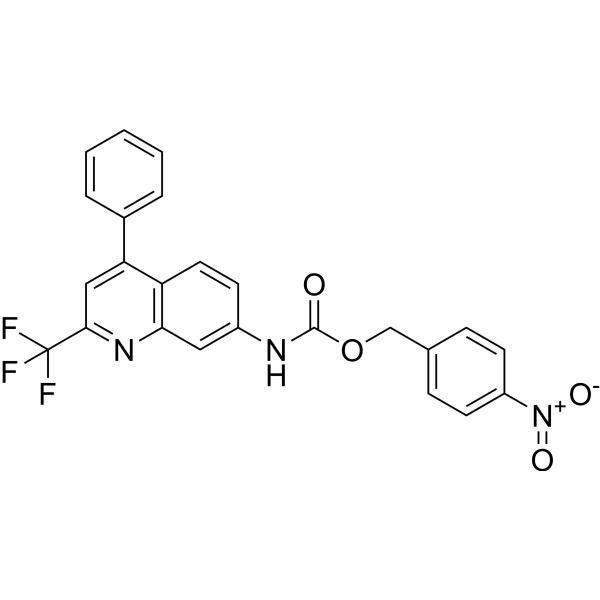
- HY-160864
-
|
HWA 448
|
Phosphodiesterase (PDE)
|
Cancer
|
|
Torbafylline is a PDE inhibitor. Torbafylline mitigates protein breakdown in rat skeletal muscle following burns by activating the PDE4/cAMP/EPAC/PI3K/Akt signaling pathway. Torbafylline suppresses the increased ubiquitin-proteasome-dependent protein degradation observed in the skeletal muscles of rats susceptible to cancer and sepsis .
|
-
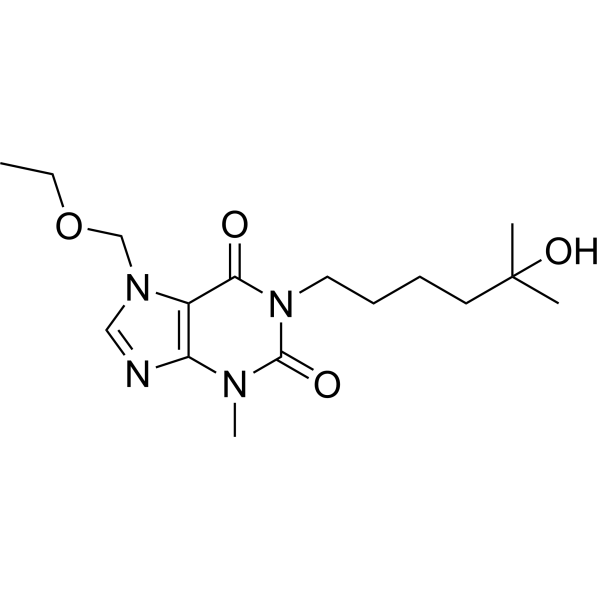
- HY-N1181
-
|
4'-O-Methyl Quercetin
|
Endogenous Metabolite
|
Inflammation/Immunology
|
|
Tamarixetin (4'-O-Methyl Quercetin) is a natural flavonoid derivative of quercetin, with anti-oxidative and anti-inflammatory effects. Tamarixetin protects against cardiac hypertrophy .
|
-

- HY-P10231
-
|
|
Carboxypeptidase
|
Others
|
|
Ac-Phe-Thiaphe-OH is a modified peptide, which is utilized as substrate for carboxypeptidase A (CPA) .
|
-

- HY-103017A
-
|
|
IRAK
|
Infection
Inflammation/Immunology
Cancer
|
|
JH-X-119-01 is a potent and selective interleukin-1 receptor-associated kinases 1 (IRAK1) inhibitor. JH-X-119-01 ameliorates LPS-induced sepsis in mice . JH-X-119-01 inhibits IRAK1 biochemically with an apparent IC50 of 9 nM while exhibiting no inhibition of IRAK4 at concentrations up to 10 μM .
|
-
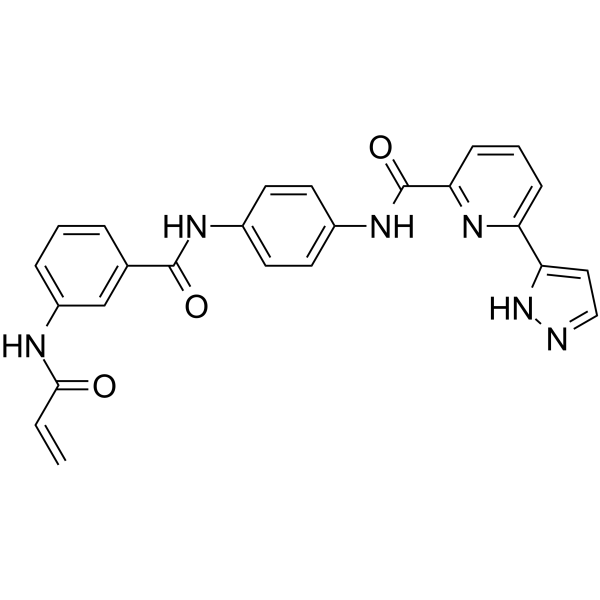
- HY-149580
-
|
|
NF-κB
|
Inflammation/Immunology
|
|
NF-κB-IN-12 (compound 3h) is a potent NF-κB inhibitor, with an IC50 of 1.02 μM. NF-κB-IN-12 can be used for acute lung injury research .
|
-
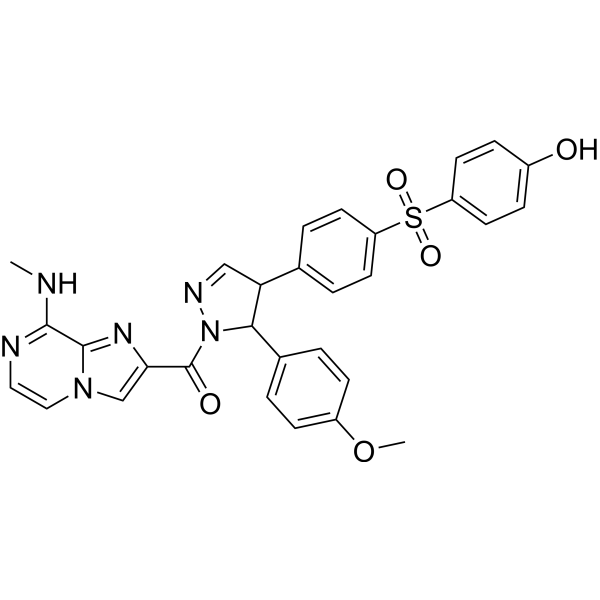
- HY-149426
-
|
|
Sirtuin
|
Inflammation/Immunology
|
|
SIRT5 inhibitor 7 (compound 58) is a substrate-competitive and selective SIRT5 inhibitor with anti-inflammatory activity. SIRT5 inhibitor 7 has renal protective effects and regulates protein succinylation and the release of pro-inflammatory cytokines. SIRT5 inhibitor 7 has in vivo activity in AKI mouse models of lipopolysaccharide (LPS) and cecal ligation/perforation (CLP)-induced sepsis-related acute kidney injury .
|
-
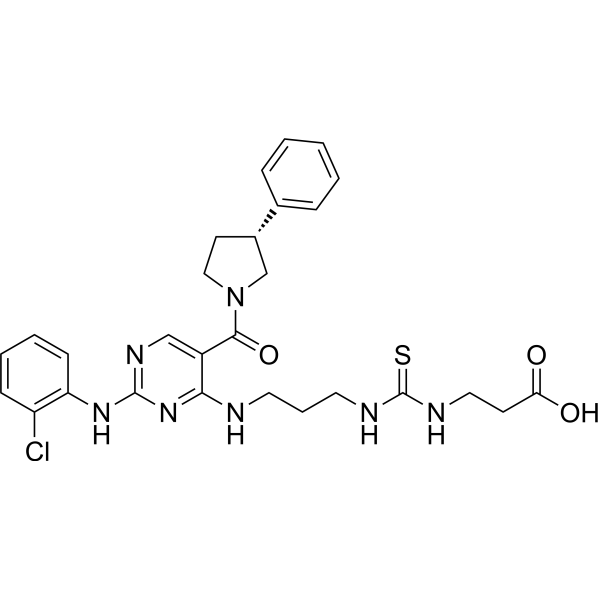
- HY-121636S
-
|
RvD2-d5
|
TRP Channel
|
Infection
Neurological Disease
Inflammation/Immunology
|
|
Resolvin D2-d5 is the deuterium labeled Resolvin D2. Resolvin D2 is a metabolite of docosahexaenoic acid (DHA), with anti-inflammatory, anti-infective activities. Resolvin D2 is a potent regulator of leukocytes and controls microbial sepsis. Resolvin D2 is a remarkably potent inhibitor of TRPV1 (IC50 = 0.1 nM) and TRPA1 (IC50 = 2 nM) in primary sensory neurons[1][2][3].
|
-
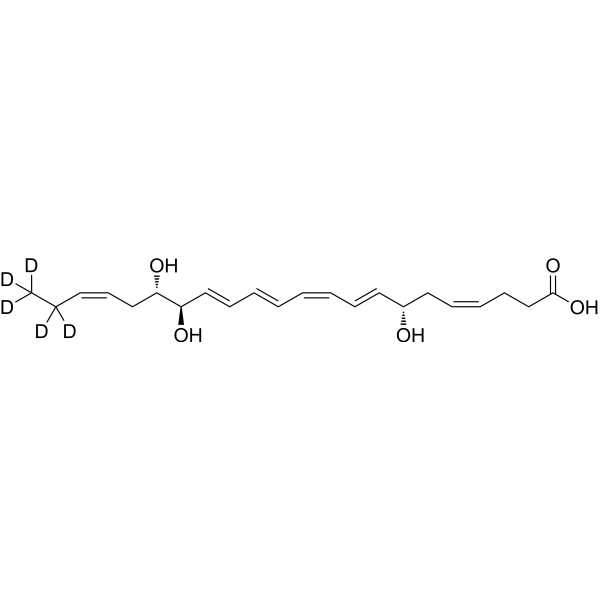
- HY-146974
-
|
|
Phosphodiesterase (PDE)
|
Inflammation/Immunology
|
|
PDE4-IN-9 (Compound 5j) is a potent inhibitor of PDE4. PDE4-IN-9 exhibits lower IC50 value (1.4 μM) against PDE4 than parent rolipram (2.0 μM) in in vitro enzyme assay. PDE4-IN-9 also displays good in vivo activity in animal models of asthma/COPD and sepsis induced by LPS .
|
-
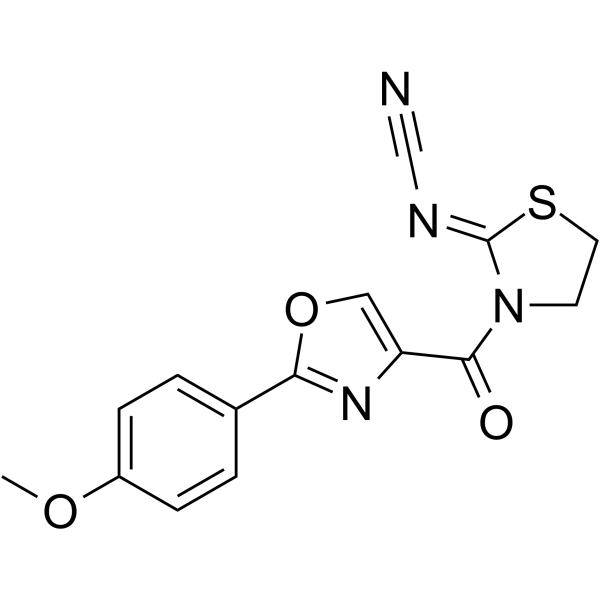
- HY-155751
-
-
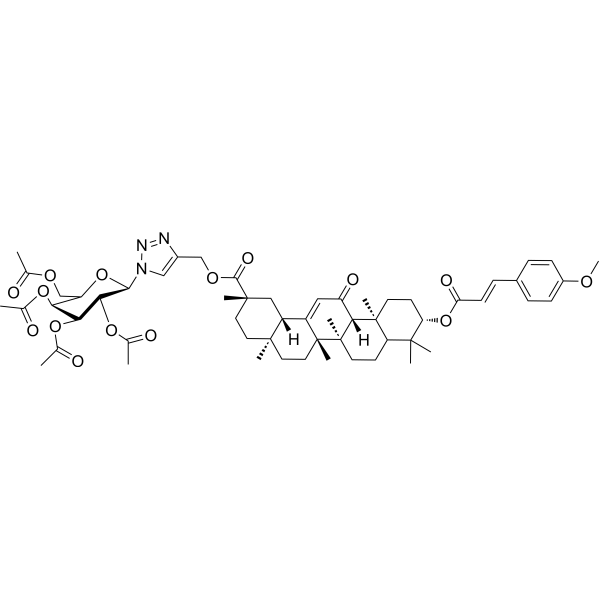
- HY-P4846
-
|
|
CXCR
|
Inflammation/Immunology
|
|
Ac-Pro-Gly-Pro-OH is an endogenous degradation product of extracellular collagen and can be used as CXCR2 agonist. Ac-Pro-Gly-Pro-OH elicits bactericidal activity and inhibits lung inflammation, reducing immune cell apoptosis. Ac-Pro-Gly-Pro-OH enhances the production of type 1 cytokines (IFN-γ and IL-12) but inhibits the production of proinflammatory cytokines. Ac-Pro-Gly-Pro-OH has the potential for the research of sepsis .
|
-
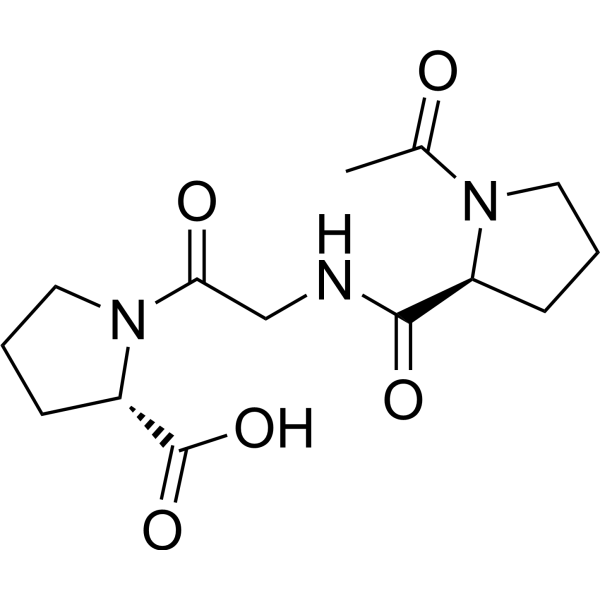
- HY-N0408
-
|
|
NF-κB
Reactive Oxygen Species
Apoptosis
Influenza Virus
|
Infection
Neurological Disease
Inflammation/Immunology
Cancer
|
|
Picroside II, an iridoid compound extracted from Picrorhiza, exhibits anti-inflammatory and anti-apoptotic activities.
picroside II alleviates the inflammatory response in sepsis and enhances immune function by inhibiting the activation of NLRP3 inflammasome and NF-κB pathways .
Picroside II is an antioxidant, exhibits a significant neuroprotective effect through reducing ROS production and protects the blood-brain barrier (BBB) after cerebral ischemia-reperfusion (CI/R) injury. Picroside II has antioxidant, anti-inflammatory, immune regulatory, anti-virus and other pharmacological activities .
|
-
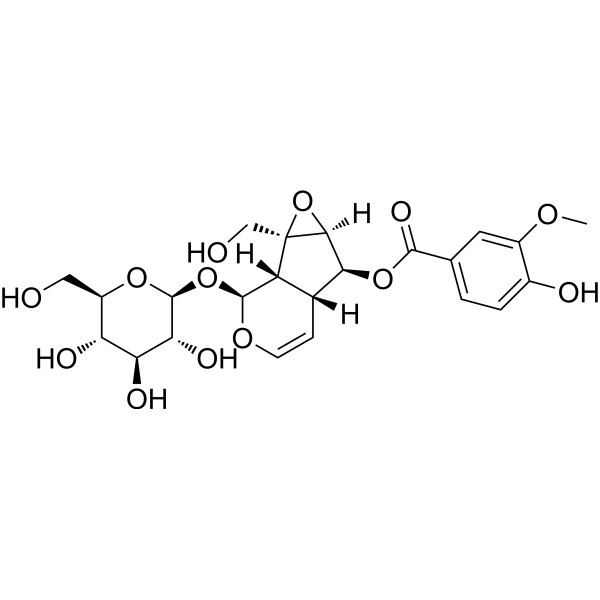
- HY-155194
-
|
|
Others
|
Inflammation/Immunology
|
|
P2X7 receptor antagonist-4 (Compound 14a) is a P2X7R antagonist. The P2X7 receptor antagonist-4 values of P2X7R IC50 in human and mouse are 64.7 and 10.1 nM, respectively. P2X7 receptor antagonist-4 can inhibit the activation of NLRP3 inflammasome, thereby inhibiting the expression of caspase-1, gasdermin D, IL-1β and IL-18 in the damaged kidney of sepsis mice .
|
-
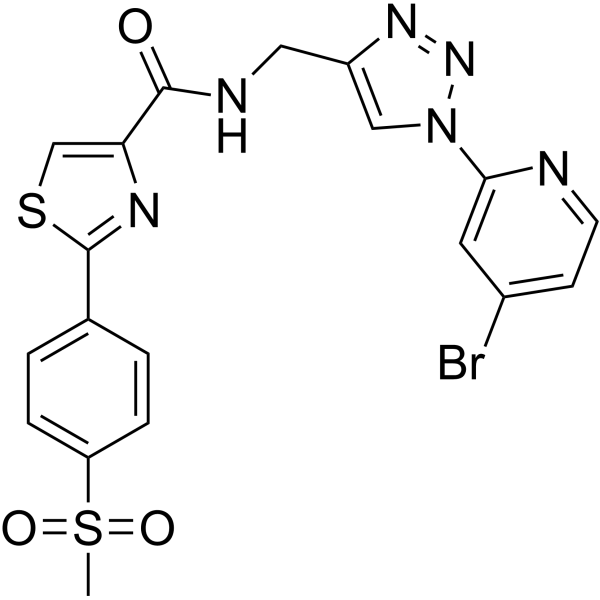
- HY-12118
-
-
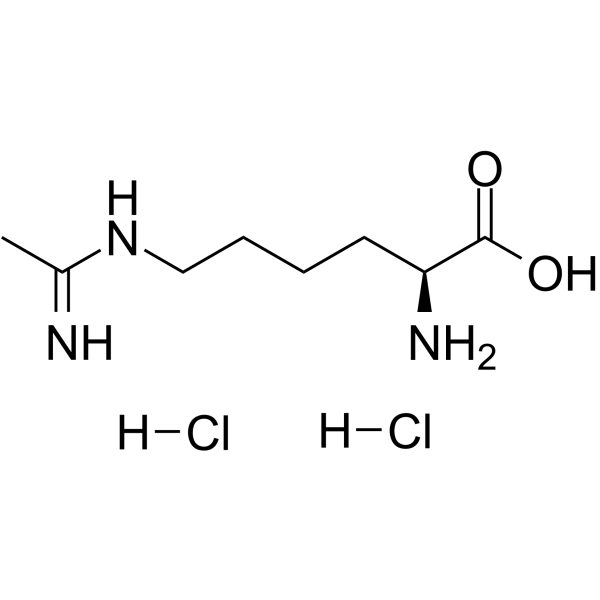
- HY-P3496
-
|
|
Pyroptosis
|
Inflammation/Immunology
|
|
Pep19-2.5 is an synthetic and antitoxin peptide, blocks the intracellular endotoxin signaling cascade. Pep19-2.5 inhibits signaling of lipopeptides (LP) and lipopolysaccharides (LPS) mediated by transmembrane and cytosolic pattern recognition receptors (PRRs). The signaling cascades lead to inflammation and cell pyroptosis .
|
-

- HY-105088
-
|
MSI 78 free base
|
Bacterial
|
Infection
|
|
Pexiganan (MSI 78 free base) is a synthetic analog of magainin 2. Pexiganan is a potent and orally active broad-spectrum antimicrobial peptide. Pexiganan can be used in the research of infections, such as diabetic foot ulcer infections .
|
-

- HY-N7741
-
|
Dehydrozaluzanin C-derivative
|
Others
|
Infection
Inflammation/Immunology
|
|
Isozaluzanin C (Dehydrozaluzanin c-derivative) is an anti-inflammatory agent that can be isolated from Saussurea lappa and has immunomodulatory effects. Isozaluzanin C improves tissue damage (lung, kidney, and liver) and excessive inflammation in mice induced by LPS (HY-D1056) or CRKP infection. Isozaluzanin C can be used in the study of bacterial infections and sepsi .
|
-
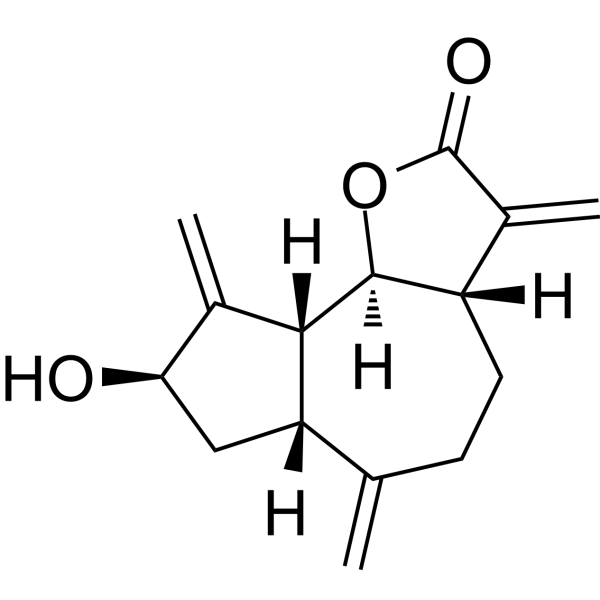
- HY-15449
-
-

- HY-15208
-
|
HMR 1098
|
Potassium Channel
|
Neurological Disease
|
|
Clamikalant sodium (HMR 1098) is an ATP-sensitive potassium (KATP) channel blocker. Clamikalant sodium can be used for the research of arrhythmia .
|
-
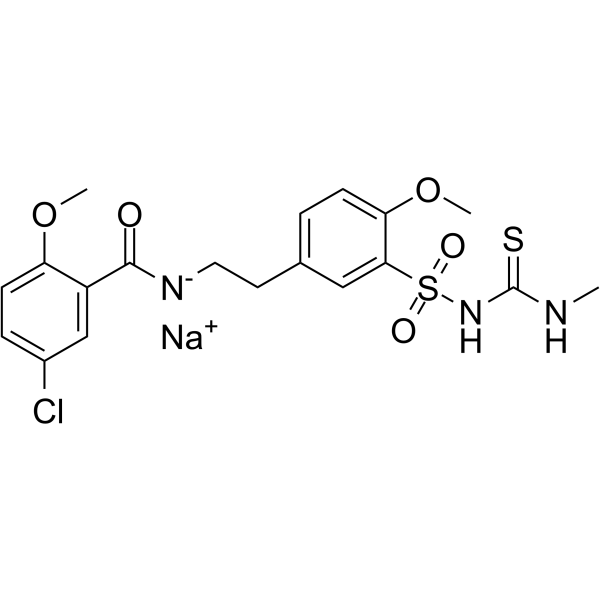
- HY-B1075
-
|
MK-0955 calcium
|
Bacterial
Antibiotic
|
Infection
Cancer
|
|
Fosfomycin (MK-0955) calcium is a blood-brain barrier penetrating, broad-spectrum antibiotic by irreversibly inhibiting an early stage in cell wall synthesis. Fosfomycin calcium shows both in vivo and in vitro activity against a wide range of bacteria, including multidrug-resistant (MDR), extensively drug-resistant (XDR), and pan-drug-resistant (PDR) bacteria .
|
-

- HY-B0609
-
|
MK-0955 tromethamine
|
Bacterial
Antibiotic
|
Infection
Cancer
|
|
Fosfomycin (MK-0955) tromethamine is a blood-brain barrier penetrating, broad-spectrum antibiotic by irreversibly inhibiting an early stage in cell wall synthesis. Fosfomycin tromethamine shows both in vivo and in vitro activity against a wide range of bacteria, including multidrug-resistant (MDR), extensively drug-resistant (XDR), and pan-drug-resistant (PDR) bacteria .
|
-
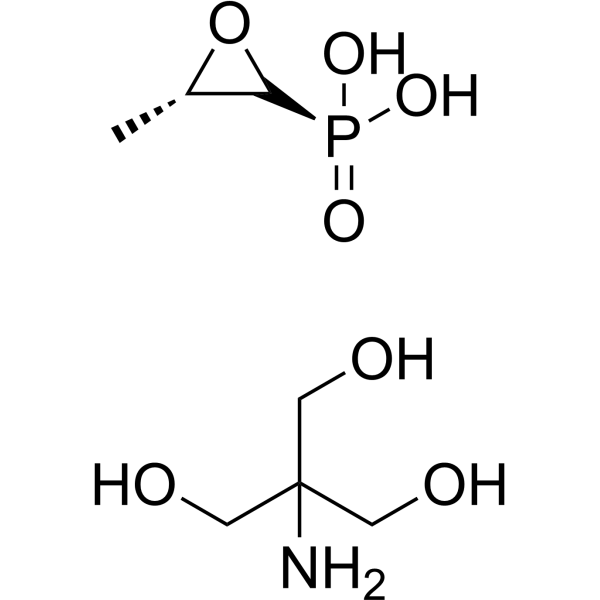
- HY-W016420
-
|
MK-0955 sodium
|
Bacterial
Antibiotic
|
Infection
Cancer
|
|
Fosfomycin (MK-0955) sodium is a blood-brain barrier penetrating, broad-spectrum antibiotic by irreversibly inhibiting an early stage in cell wall synthesis. Fosfomycin sodium shows both in vivo and in vitro activity against a wide range of bacteria, including multidrug-resistant (MDR), extensively drug-resistant (XDR), and pan-drug-resistant (PDR) bacteria .
|
-

- HY-B1075A
-
|
MK-0955
|
Bacterial
Antibiotic
|
Infection
|
|
Fosfomycin (MK-0955) is a broad-spectrum antibiotic. Fosfomycin can cross blood-brain barrier penetrating, and irreversibly inhibits an early stage in cell wall synthesis. Fosfomycin shows anti-bacteria activity for a range of bacteria, including multidrug-resistant (MDR), extensively drug-resistant (XDR), and pan-drug-resistant (PDR) bacteria .
|
-
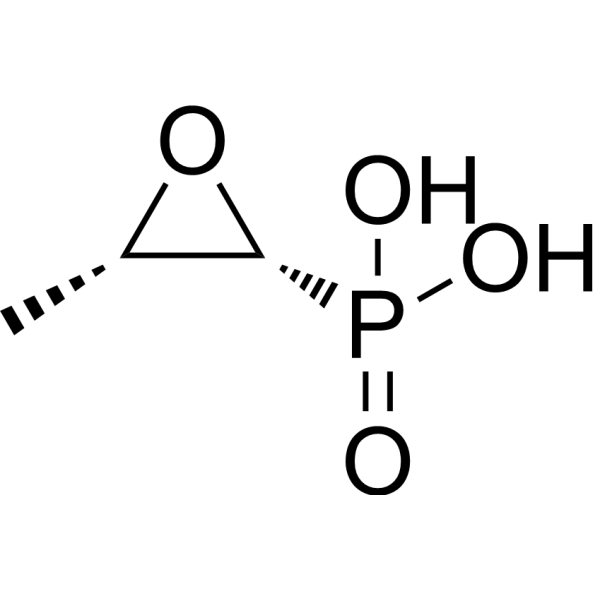
- HY-B0609R
-
|
|
Bacterial
Antibiotic
|
Infection
Cancer
|
|
Fosfomycin (tromethamine) (Standard) is the analytical standard of Fosfomycin (tromethamine). This product is intended for research and analytical applications. Fosfomycin (MK-0955) tromethamine is a blood-brain barrier penetrating, broad-spectrum antibiotic by irreversibly inhibiting an early stage in cell wall synthesis. Fosfomycin tromethamine shows both in vivo and in vitro activity against a wide range of bacteria, including multidrug-resistant (MDR), extensively drug-resistant (XDR), and pan-drug-resistant (PDR) bacteria .
|
-

- HY-160637
-
-
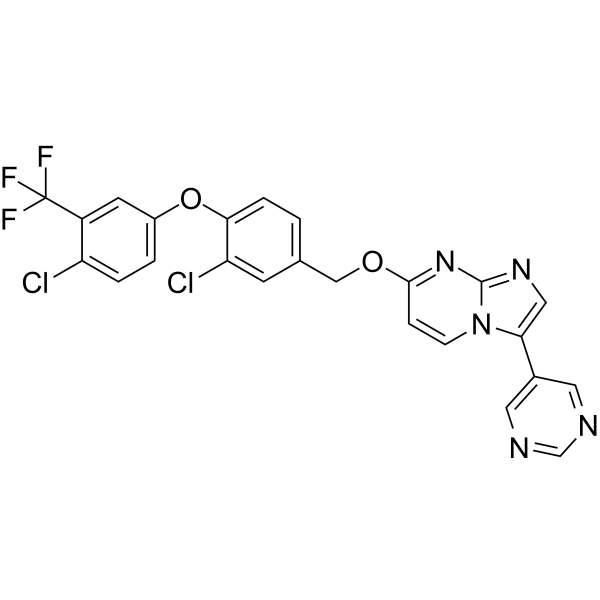
| Cat. No. |
Product Name |
Type |
-
- HY-151537
-
|
|
Fluorescent Dyes/Probes
|
|
Gol-NTR is a Golgi-targetable probe with high selectivity and sensitivity. Gol-NTR is Nitroreductase (NTR)-activated and has visualization acute lung injury (ALI) and repair function. Gol-NTR has a low detection limit of 54.8 ng/mL. Gol-NTR can be used for the research for monitoring and assessing research response of sepsis-induced ALI .
|
| Cat. No. |
Product Name |
Type |
-
- HY-139414
-
|
|
Biochemical Assay Reagents
|
|
Lysophosphatidylcholines is an orally active lysolipid and a component of oxidized low density lipoprotein (LDL). Lysophosphatidylcholines induces cell injury, the production of IL-1β and apoptosis. Lysophosphatidylcholines has a proactive effect on sepsis .
|
| Cat. No. |
Product Name |
Target |
Research Area |
-
- HY-P5949
-
|
|
Bacterial
|
Infection
|
|
AMPR-22 is an antimicrobial peptide. AMPR-22 can bind to the bacterial membrane and induces membrane permeabilization. AMPR-22 is effective against murine model of sepsis induced by MDR strains
|
-
- HY-P10208A
-
-
- HY-P2280
-
-
- HY-P10208
-
|
|
Toll-like Receptor (TLR)
|
Infection
|
|
PKH is a TLR4 antagonist. PKH is a novel tripeptide and can be isolated from Akkermansia muciniphila. RKH reduces sepsis-induced inflammatory cell activation and proinflammatory factor overproduction .
|
-
- HY-P3031
-
|
MAPK1
|
p38 MAPK
NF-κB
|
Inflammation/Immunology
|
|
Mitogen-activated protein kinase 1 (MAPK1) can activate the downstream p38/NF-κB pathway. Mitogen-activated protein kinase 1 can regulate cellular processes in various sepsis-associated diseases. MAPK-catalyzed phosphorylation of substrate proteins functions as a switch to turn on or off the activity of the substrate protein .
|
-
- HY-P2682
-
|
|
MMP
|
Metabolic Disease
|
|
MMP-8/MMP-26 Fluorogenic substrate (DNP-Pro-Leu-Ala-Tyr-Trp-Ala-Arg) is a matrix metalloproteinase-8 (MMP-8) fluorogenic substrate. MMP-8/MMP-26 Fluorogenic substrate can be used for the research of atherosclerosis, pulmonary fibrosis, and sepsis .
|
-
- HY-P2458
-
|
|
Bacterial
|
Infection
|
|
CAP18 (rabbit) is a 37 amino acids antimicrobial peptide originally isolated from rabbit granulocytes. CAP18 (rabbit) has broad antimicrobial activity against both Gram-positive (IC50, 130-200 nM) and Gram-negative (IC50, 20-100 nM) bacteria. CAP18 (rabbit) has the potential for bacterial sepsis research .
|
-
- HY-P3612
-
|
|
CXCR
|
Inflammation/Immunology
|
|
CTCE-0214 is a chemokine CXC receptor 4 (CXCR4) agonist, SDF-1α (stromal cell-derived factor-1α) peptide analog. CTCE-0214 shows anti-inflammatory activity, and can be used in inflammation sepsis and systemic inflammatory syndromes research .
|
-
- HY-106279
-
|
|
Peptides
|
Inflammation/Immunology
|
|
EA-230 is a synthetic oligopeptide originally derived from beta-human chorionic gonadotropin (beta-hCG) lysates. EA-230 has anti-inflammatory effects and can be used for the research of sepsis .
|
-
- HY-P10368
-
-
- HY-105239
-
|
FE 202158
|
Vasopressin Receptor
|
Cardiovascular Disease
|
|
Selepressin (FE 202158) is a selective vasopressin V1A receptor agonist. Selepressin is a potent vasopressor. Selepressin can be used in the research of septic shock .
|
-
- HY-105239A
-
|
FE 202158 acetate
|
Vasopressin Receptor
|
Cardiovascular Disease
|
|
Selepressin (FE 202158) acetate is a selective vasopressin V1A receptor agonist. Selepressin acetate is a potent vasopressin. Selepressin acetate can be used in the study of septic shock.
|
-
- HY-A0248
-
|
|
Bacterial
Antibiotic
|
Infection
|
|
Polymyxin B Sulfate is a potent antibacterial agent and a relatively toxic antibiotic. Polymyxin B Sulfate also is a antiendotoxin agent. Polymyxin B Sulfate shows endotoxin-neutralizing properties can be used as adjunctive research in gram-negative sepsis. Polymyxin B Sulfate shows antibacterial activities in vitro and in vivo .
|
-
- HY-P10231
-
|
|
Carboxypeptidase
|
Others
|
|
Ac-Phe-Thiaphe-OH is a modified peptide, which is utilized as substrate for carboxypeptidase A (CPA) .
|
-
- HY-P4846
-
|
|
CXCR
|
Inflammation/Immunology
|
|
Ac-Pro-Gly-Pro-OH is an endogenous degradation product of extracellular collagen and can be used as CXCR2 agonist. Ac-Pro-Gly-Pro-OH elicits bactericidal activity and inhibits lung inflammation, reducing immune cell apoptosis. Ac-Pro-Gly-Pro-OH enhances the production of type 1 cytokines (IFN-γ and IL-12) but inhibits the production of proinflammatory cytokines. Ac-Pro-Gly-Pro-OH has the potential for the research of sepsis .
|
-
- HY-P3496
-
|
|
Pyroptosis
|
Inflammation/Immunology
|
|
Pep19-2.5 is an synthetic and antitoxin peptide, blocks the intracellular endotoxin signaling cascade. Pep19-2.5 inhibits signaling of lipopeptides (LP) and lipopolysaccharides (LPS) mediated by transmembrane and cytosolic pattern recognition receptors (PRRs). The signaling cascades lead to inflammation and cell pyroptosis .
|
-
- HY-105088
-
|
MSI 78 free base
|
Bacterial
|
Infection
|
|
Pexiganan (MSI 78 free base) is a synthetic analog of magainin 2. Pexiganan is a potent and orally active broad-spectrum antimicrobial peptide. Pexiganan can be used in the research of infections, such as diabetic foot ulcer infections .
|
| Cat. No. |
Product Name |
Target |
Research Area |
-
- HY-P99425
-
-
- HY-P99520
-
|
CaCP-29, IFX-1
|
Complement System
SARS-CoV
|
Infection
Inflammation/Immunology
|
|
Vilobelimab (CaCP-29, IFX-1) is a monoclonal anti-C5a antibody to the allergen C5a, a pro-inflammatory complement division product that plays a central role in mediating organ dysfunction. Vilobelimab acts as a C5a inhibitor, inhibiting neutrophil activation, chemotaxis, and reducing inflammatory signalling, and may be used in studies related to sepsis, COVID-19, etc .
|
-
- HY-P99309
-
|
BSYX-A 110; Anti-S. Epidermidis LTA Recombinant Antibody
|
Bacterial
|
Infection
|
|
Pagibaximab is a chimeric IgG1 antibody recognizing the surface component lipoteichoic acid of S. aureus and S. epidermidis. Pagibaximab can be used to prevent staphylococcal sepsis .
|
-
- HY-P99753
-
|
BAYX1351
|
TNF Receptor
|
Infection
|
|
Nerelimomab (BAYX1351) is an anti-TNF-α antibody. Nerelimomab can be used for research of sepsis .
|
| Cat. No. |
Product Name |
Category |
Target |
Chemical Structure |
| Cat. No. |
Product Name |
Chemical Structure |
-
- HY-121636S
-
|
|
|
Resolvin D2-d5 is the deuterium labeled Resolvin D2. Resolvin D2 is a metabolite of docosahexaenoic acid (DHA), with anti-inflammatory, anti-infective activities. Resolvin D2 is a potent regulator of leukocytes and controls microbial sepsis. Resolvin D2 is a remarkably potent inhibitor of TRPV1 (IC50 = 0.1 nM) and TRPA1 (IC50 = 2 nM) in primary sensory neurons[1][2][3].
|
-

| Cat. No. |
Product Name |
|
Classification |
-
- HY-156519
-
|
|
|
Alkynes
|
|
ALPK1-IN-3 is an inhibitor of ALPK1 extracted from patent WO2022063153A1 compound T007. ALPK1-IN-3 inhibits kidney proinflammatory gene expression and improves the survival rate of the animals in sepsis induced acute kidney injury animal model . ALPK1-IN-3 is a click chemistry reagent, it contains an Alkyne group and can undergo copper-catalyzed azide-alkyne cycloaddition (CuAAc) with molecules containing Azide groups.
|
Your information is safe with us. * Required Fields.
Inquiry Information
- Product Name:
- Cat. No.:
- Quantity:
- MCE Japan Authorized Agent:


































































































